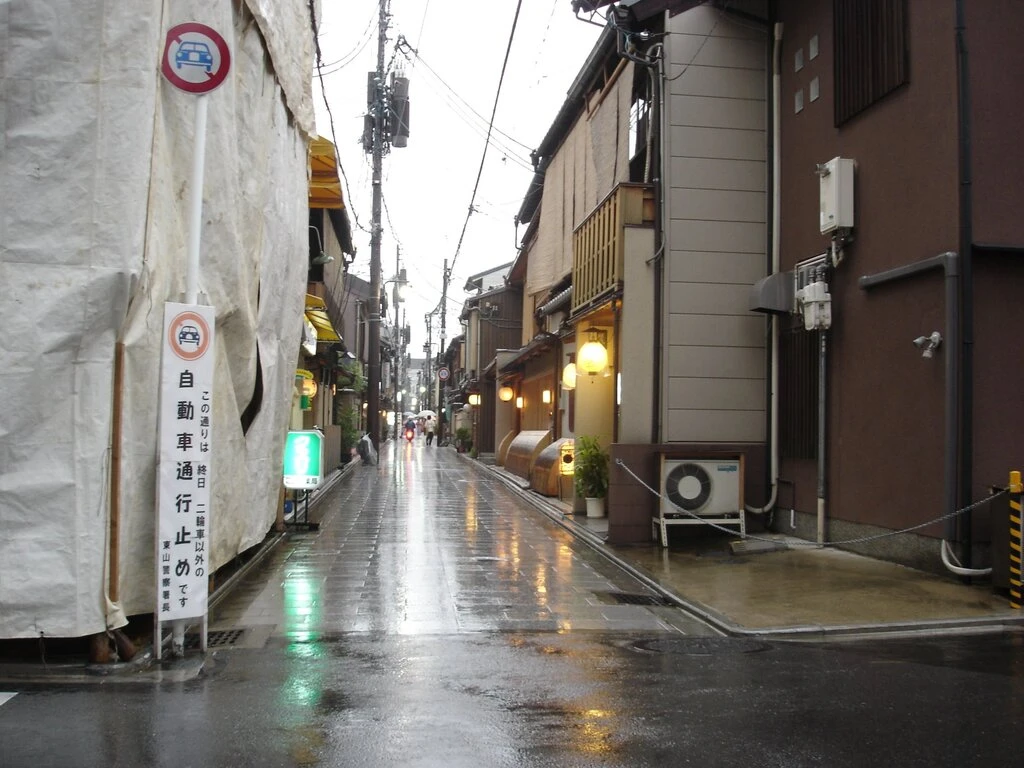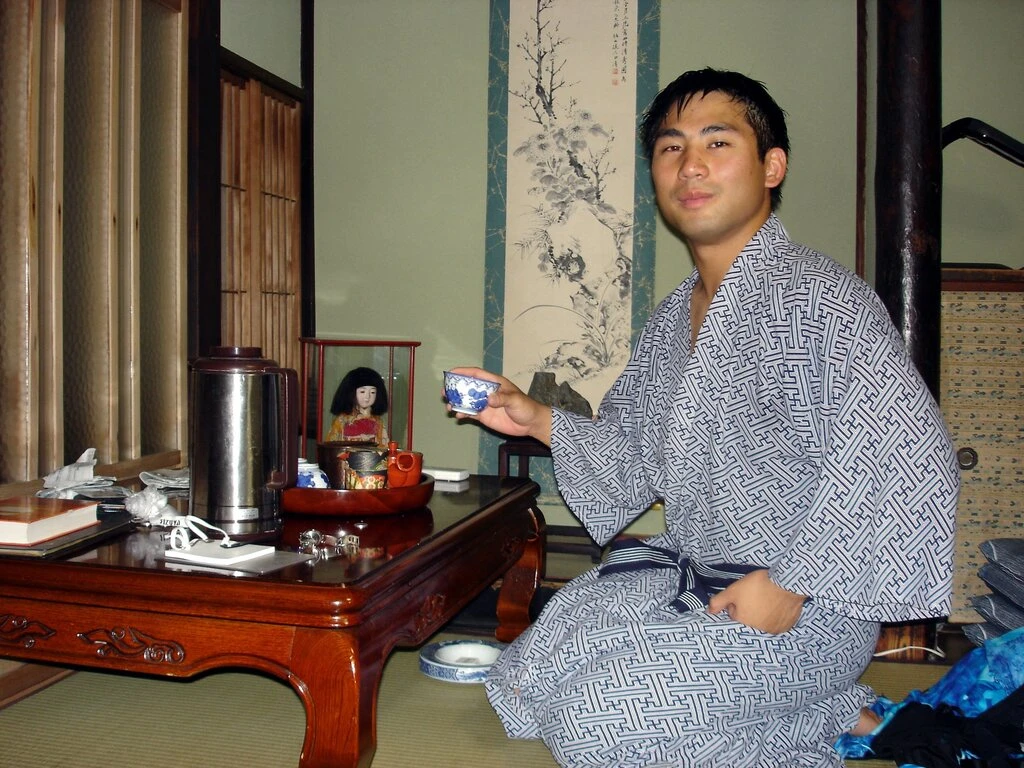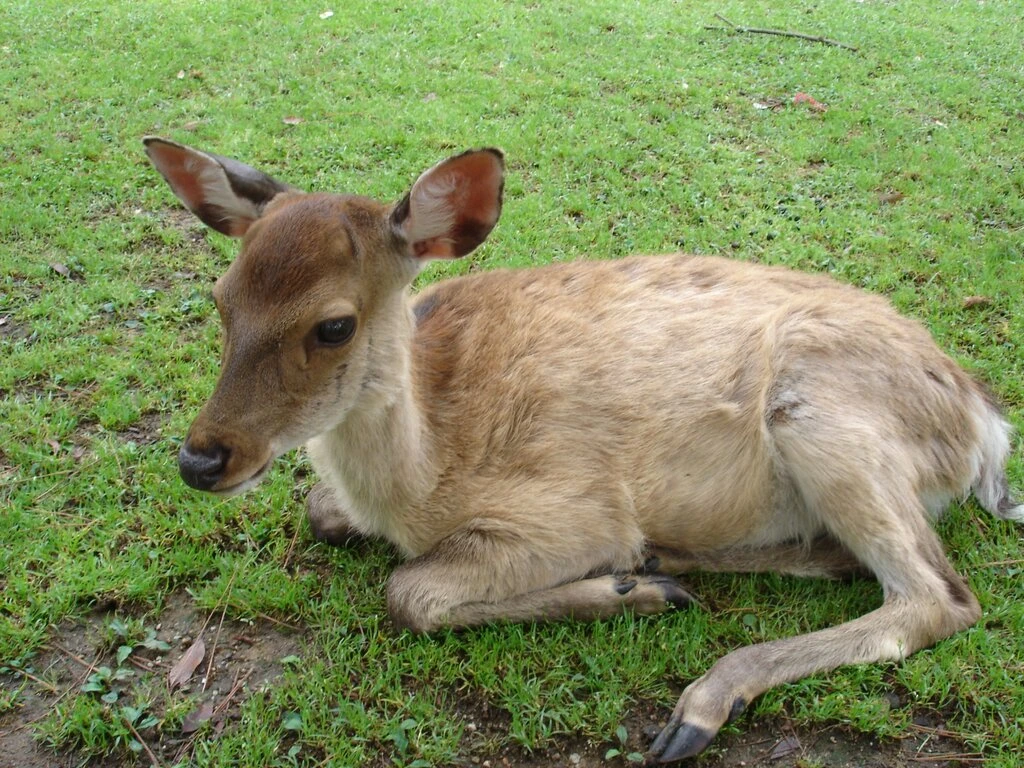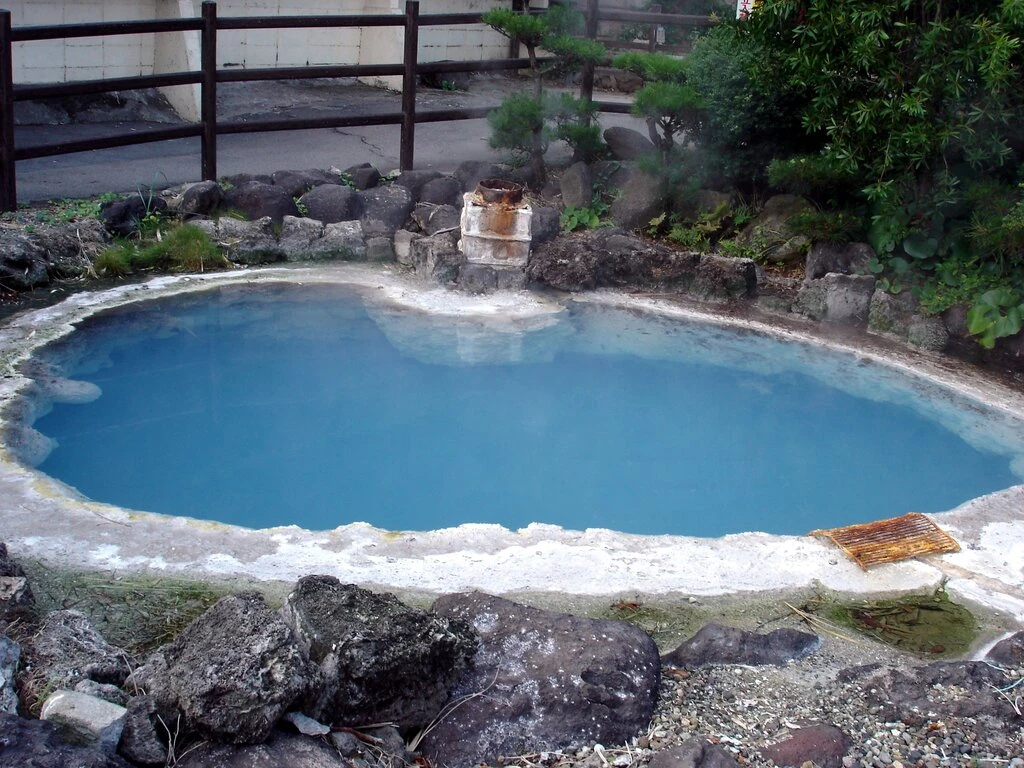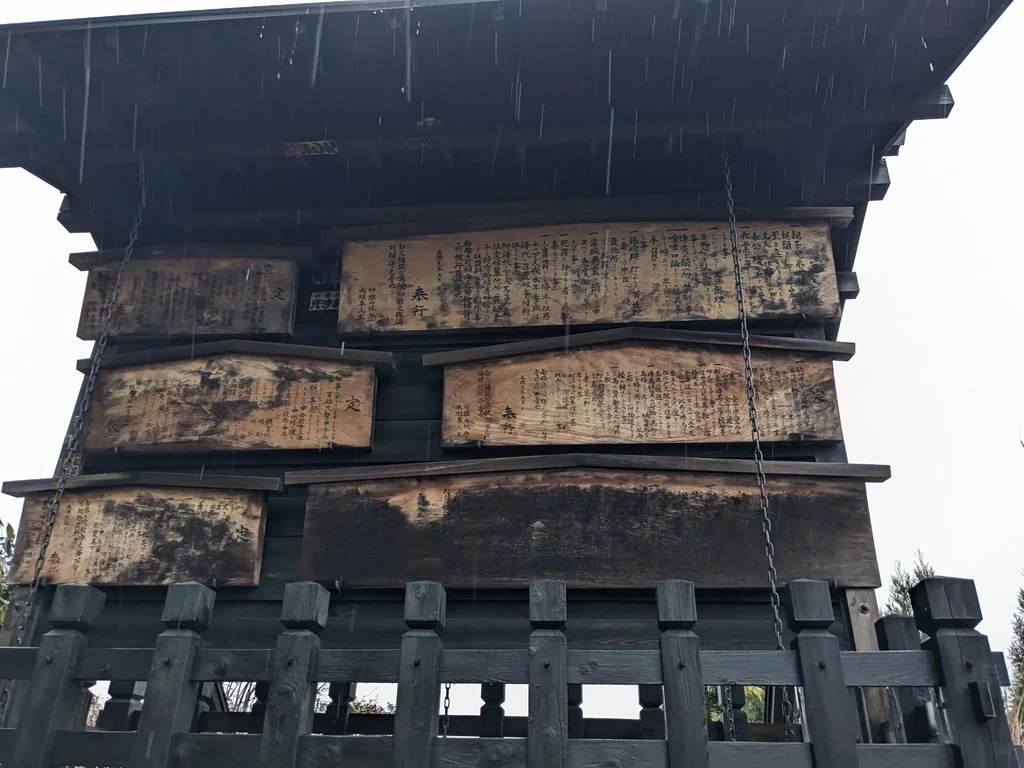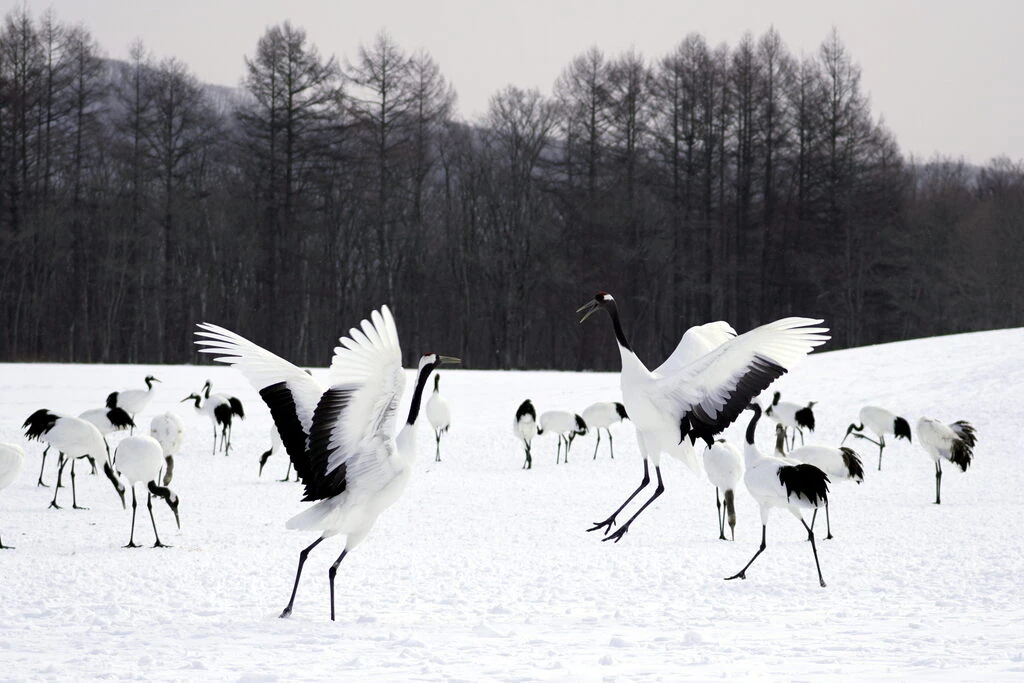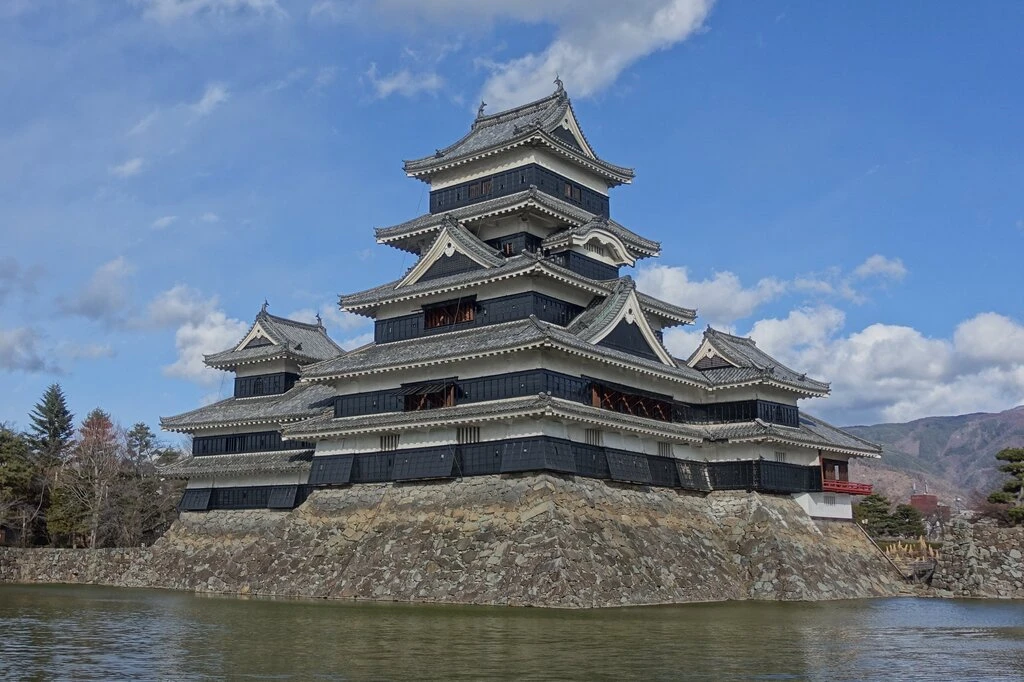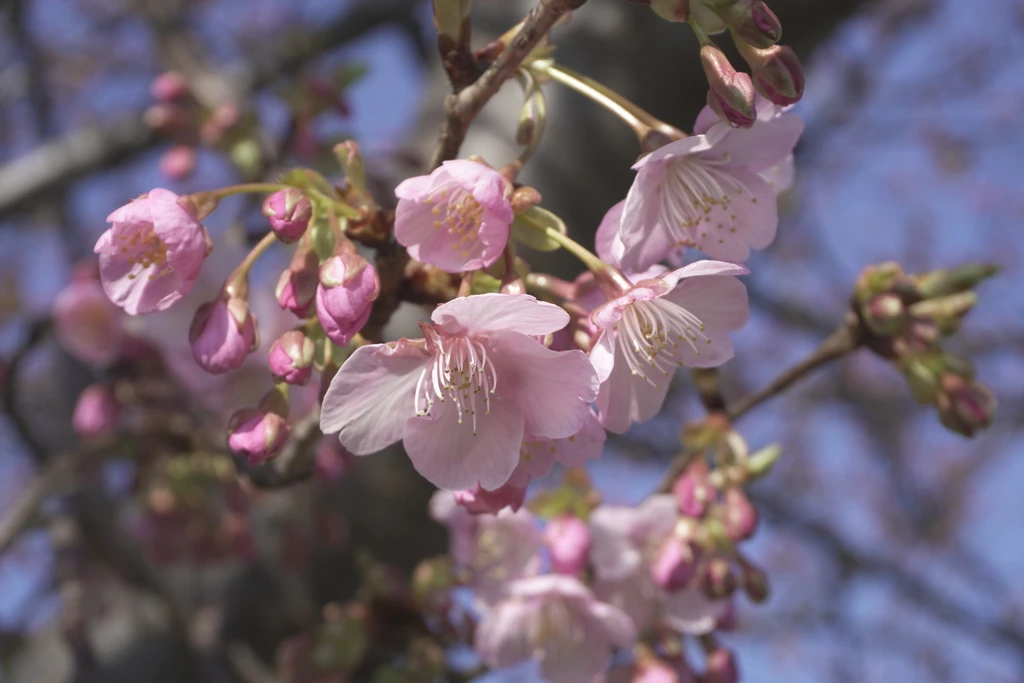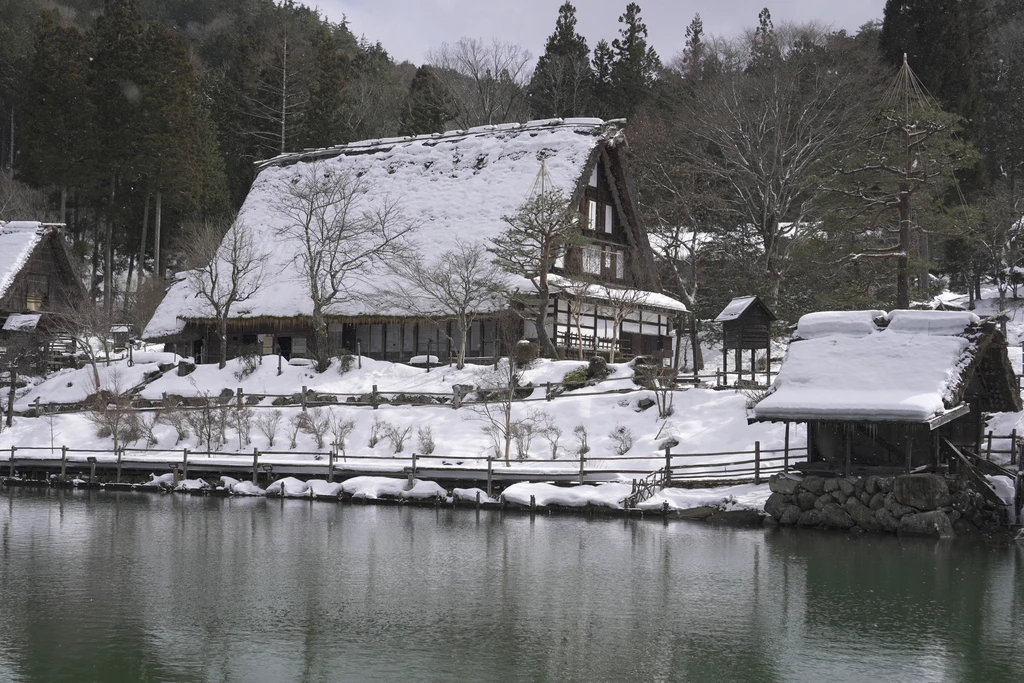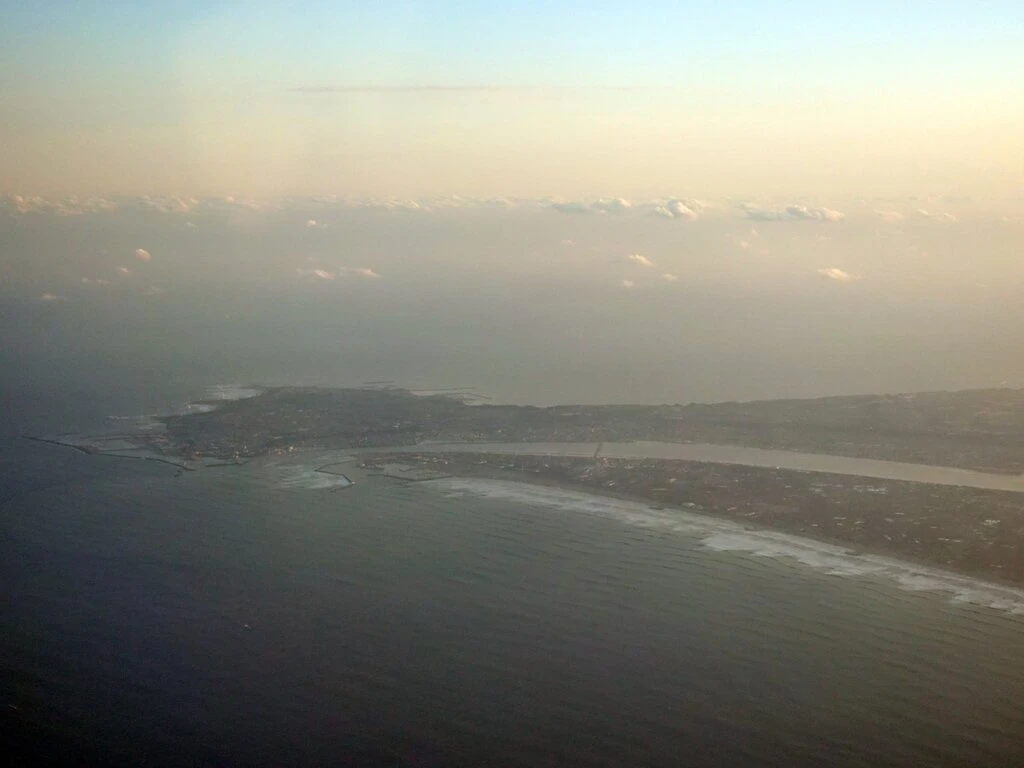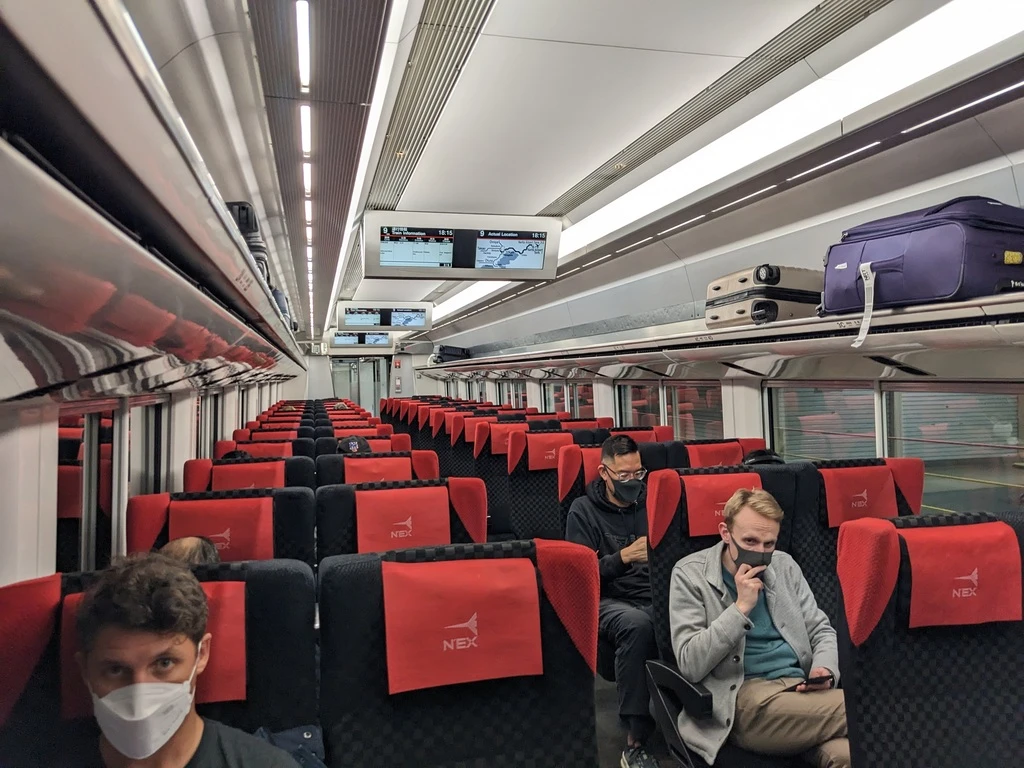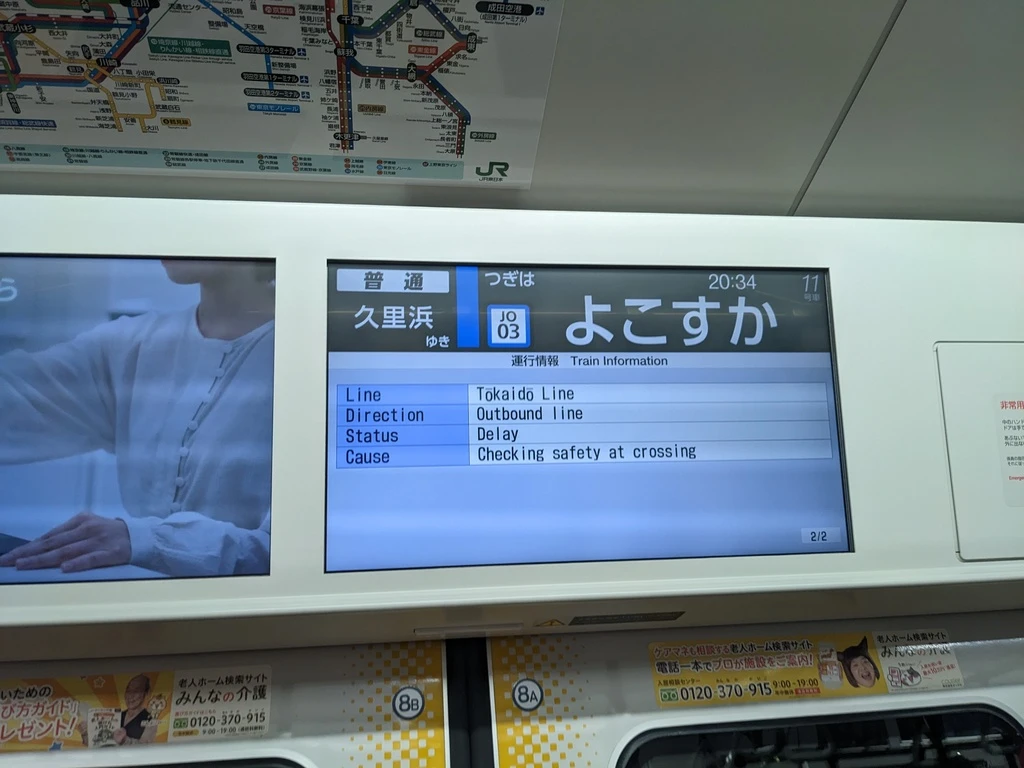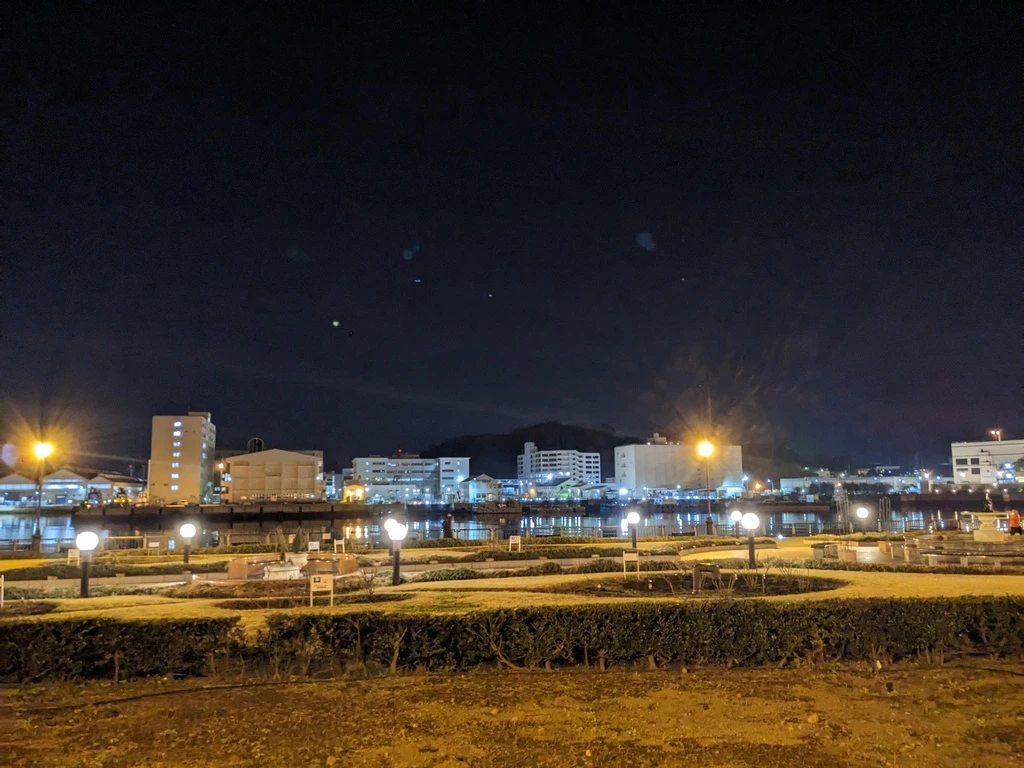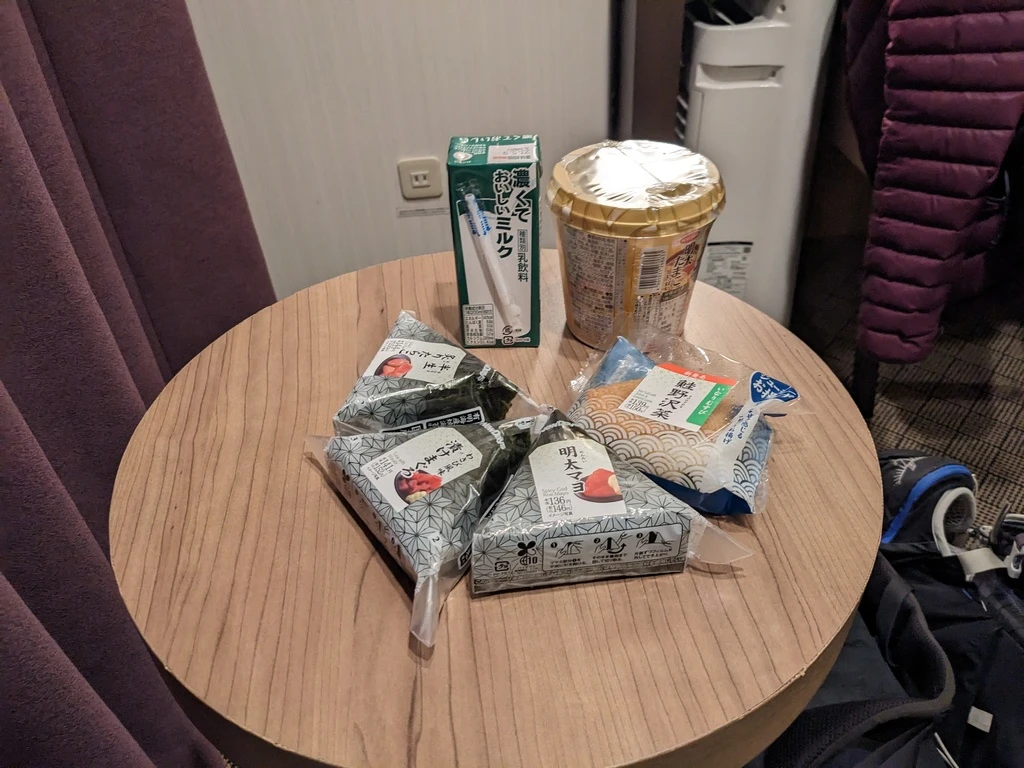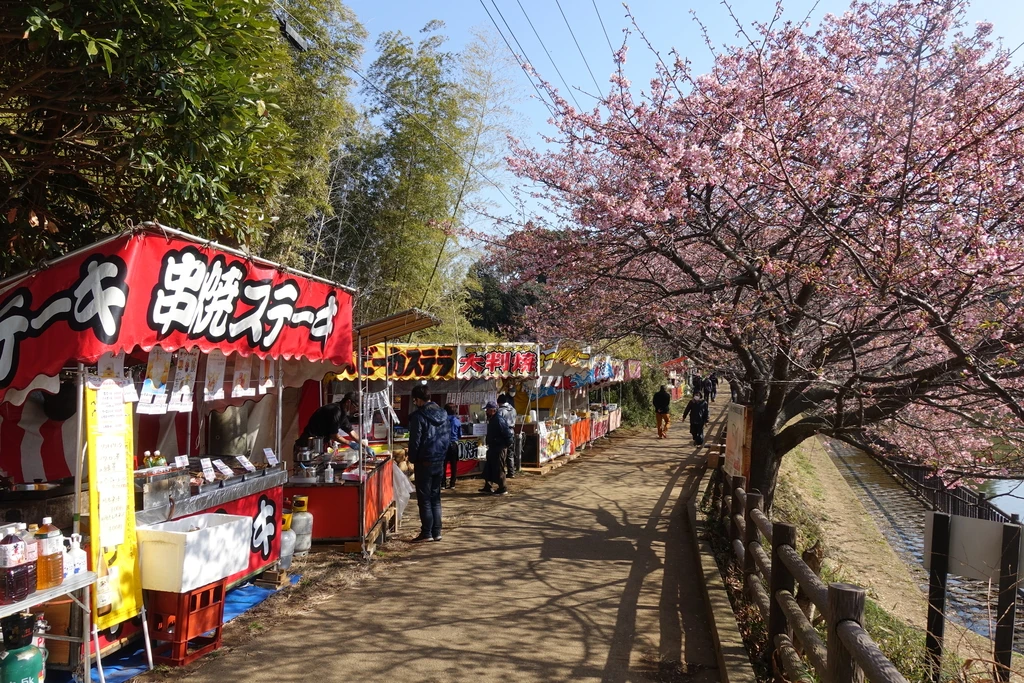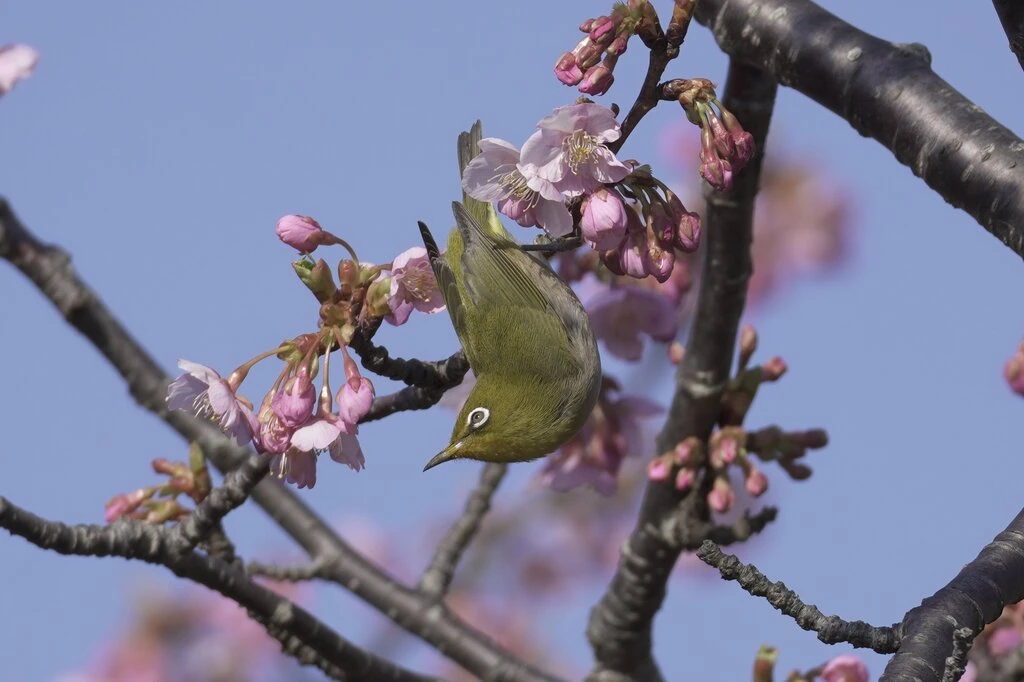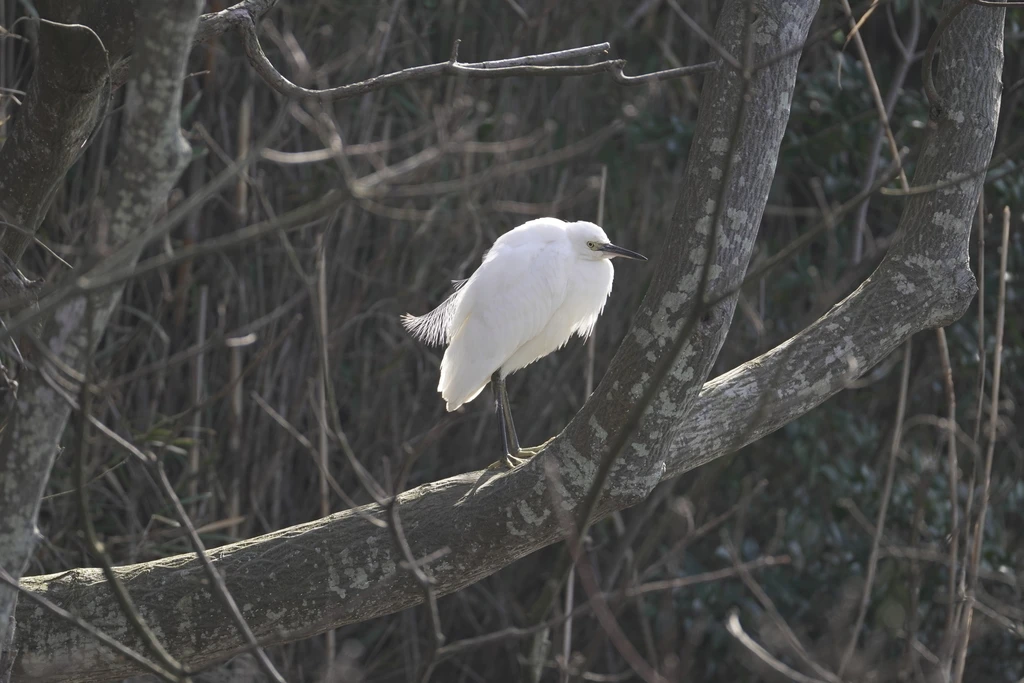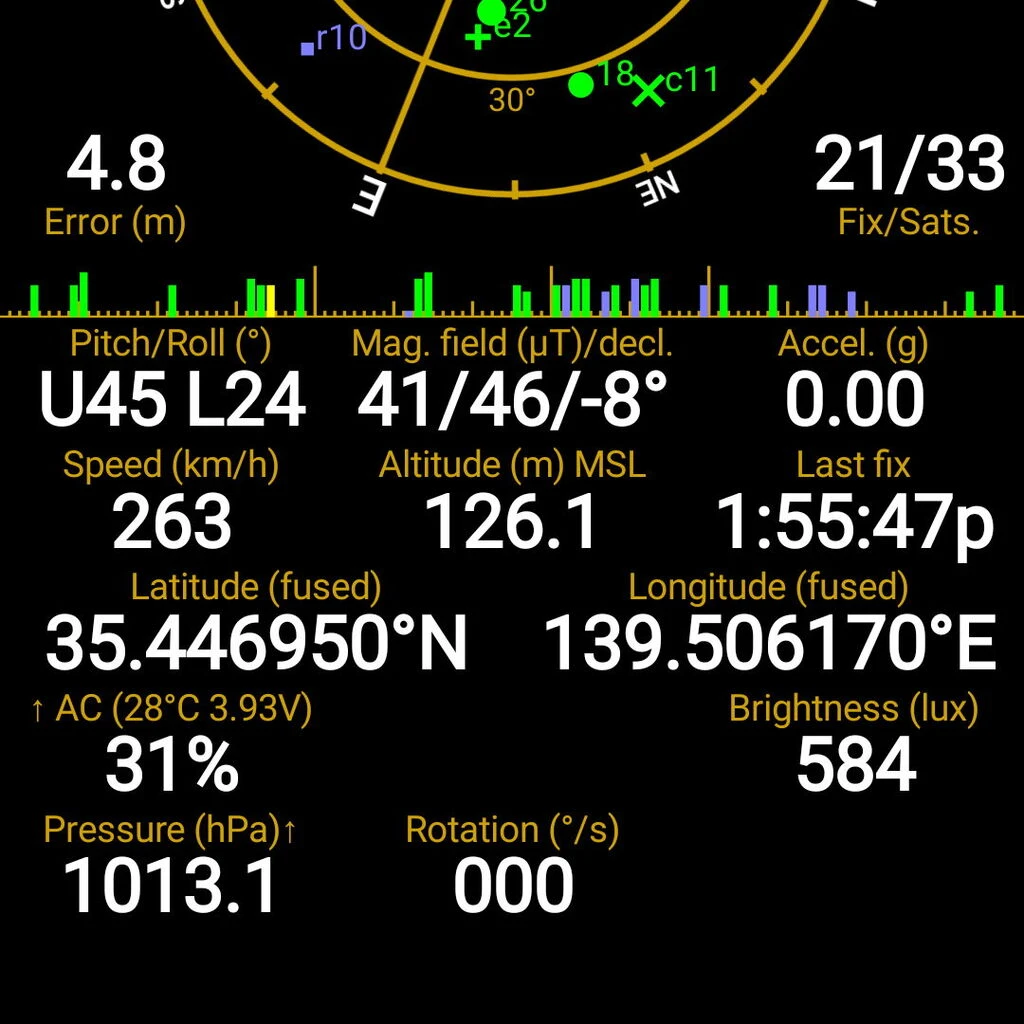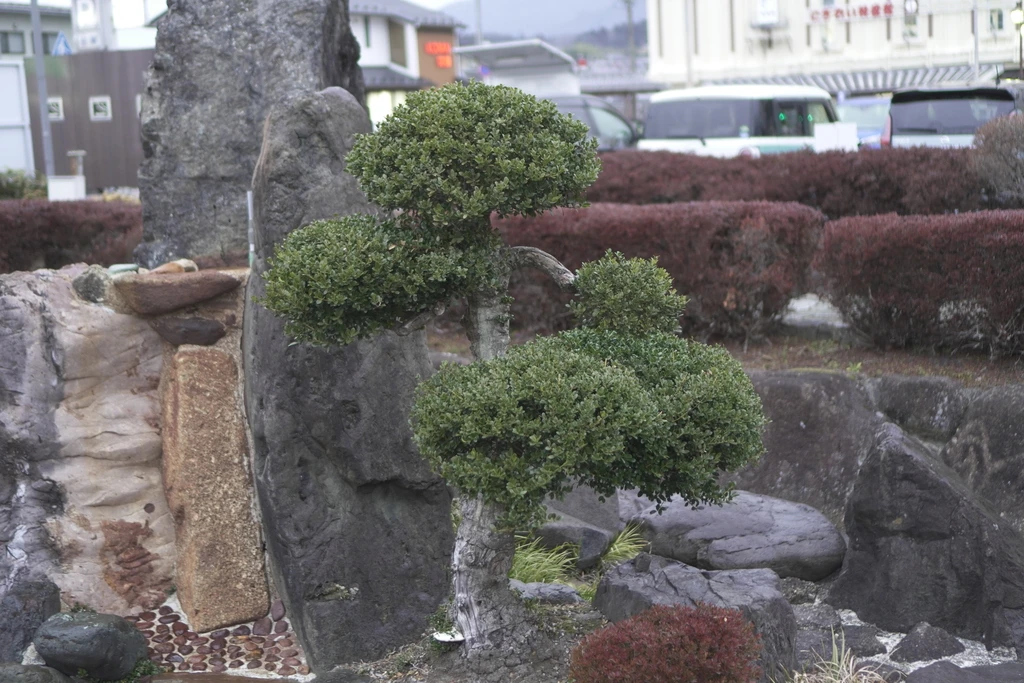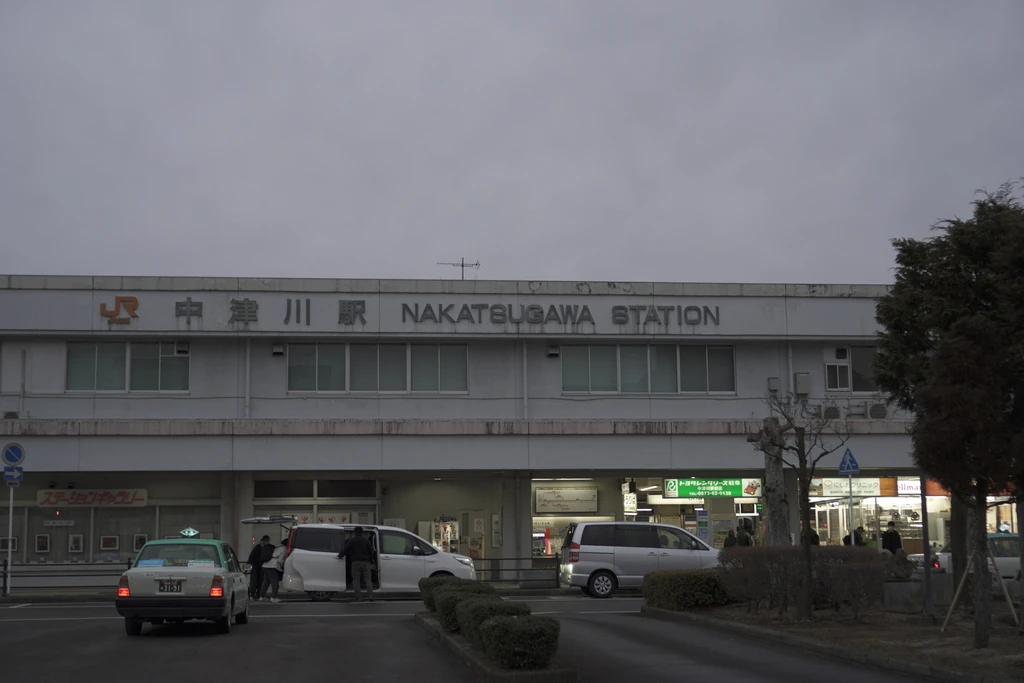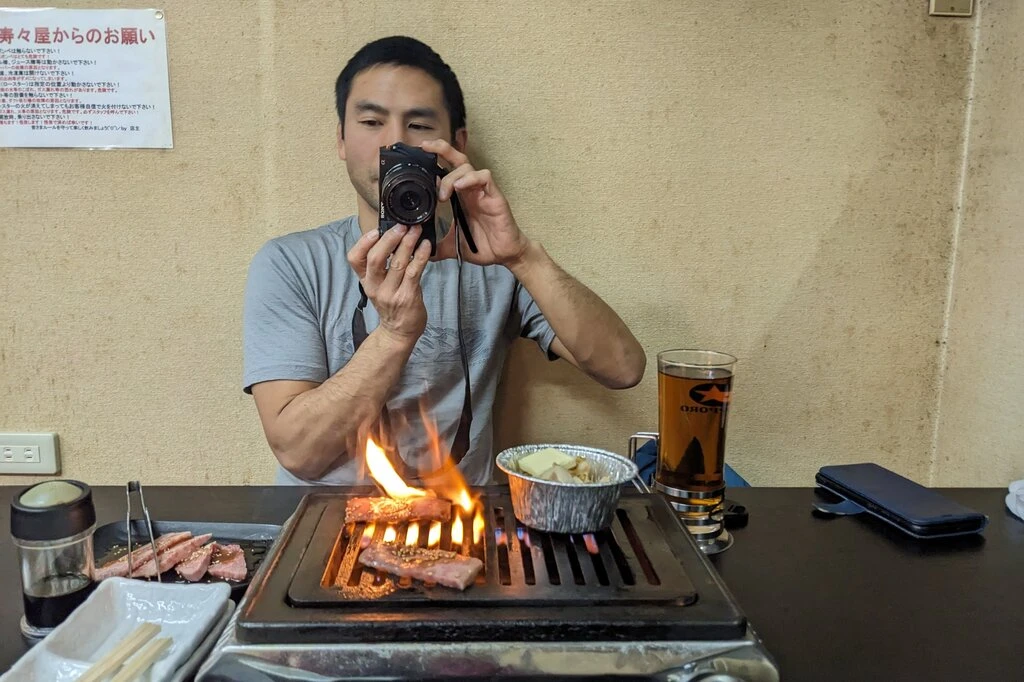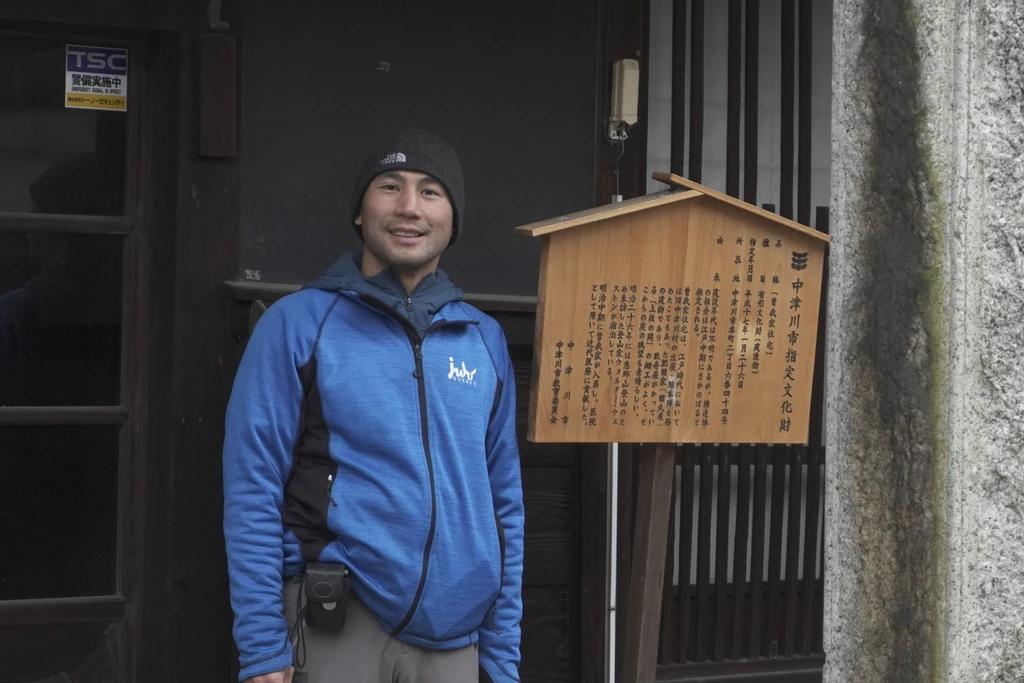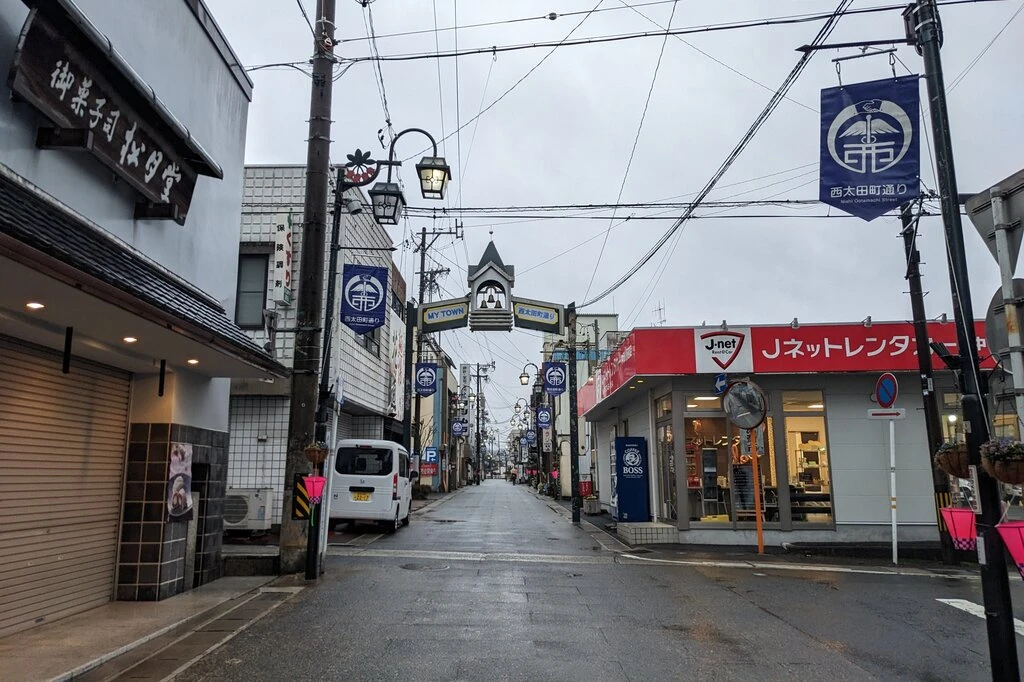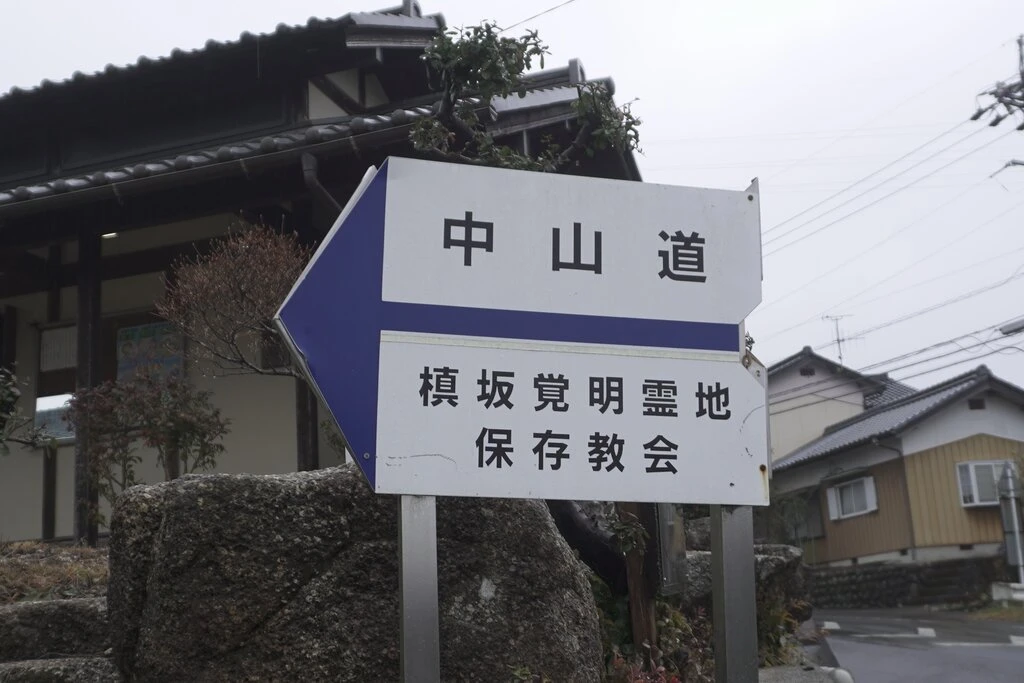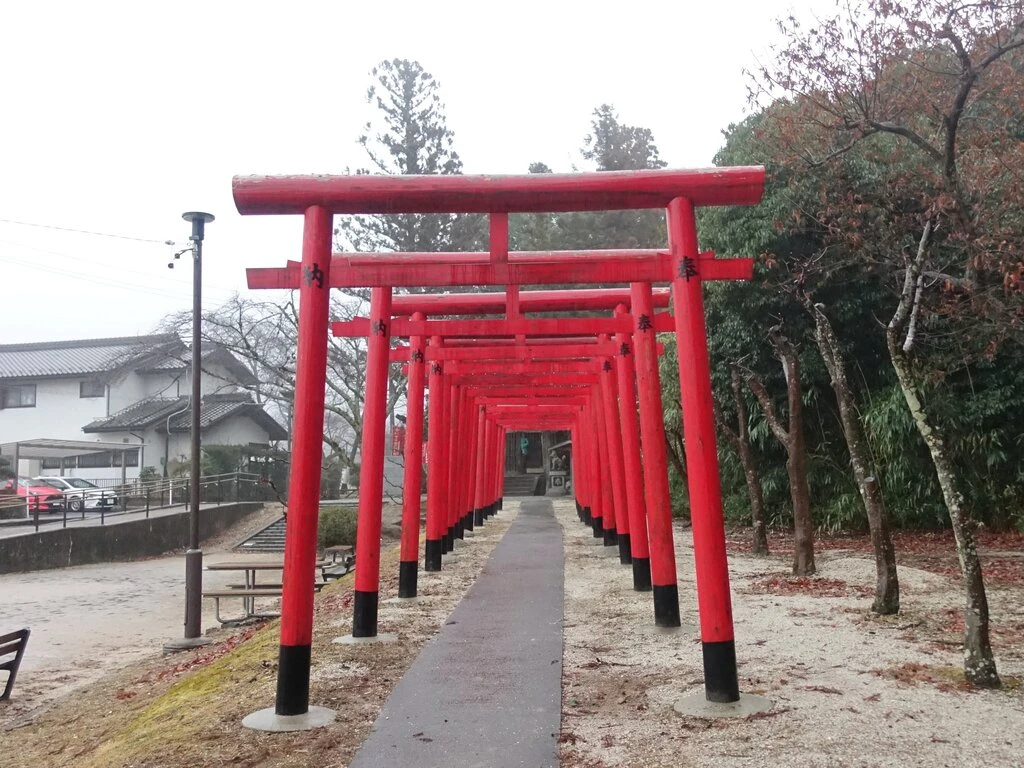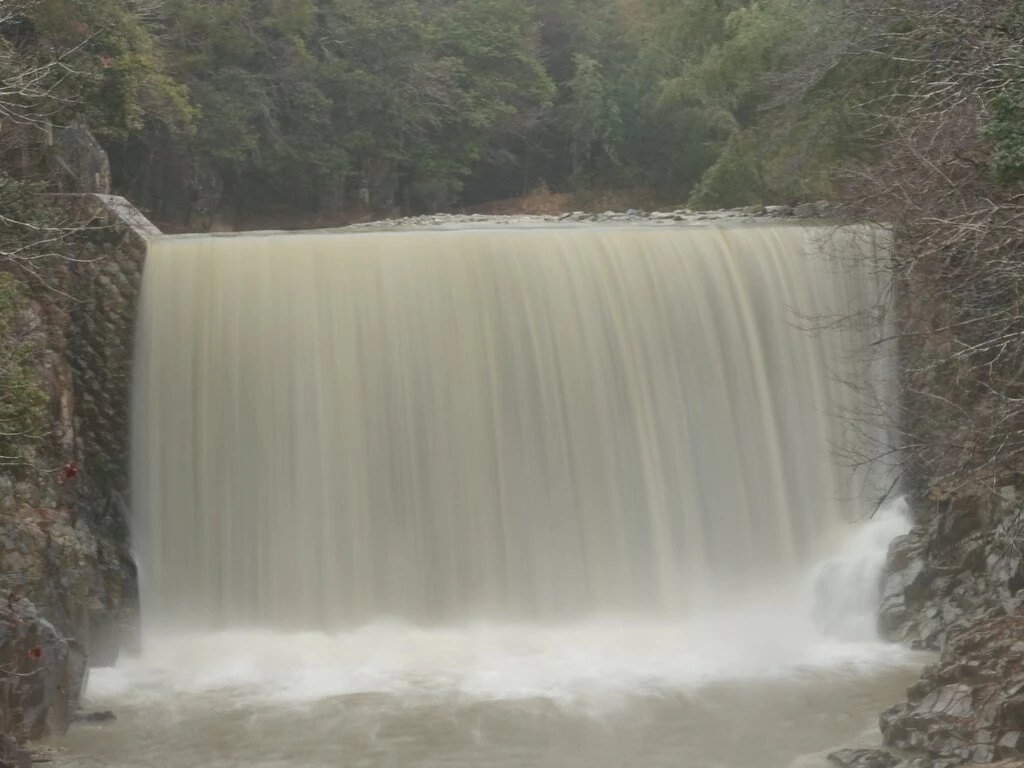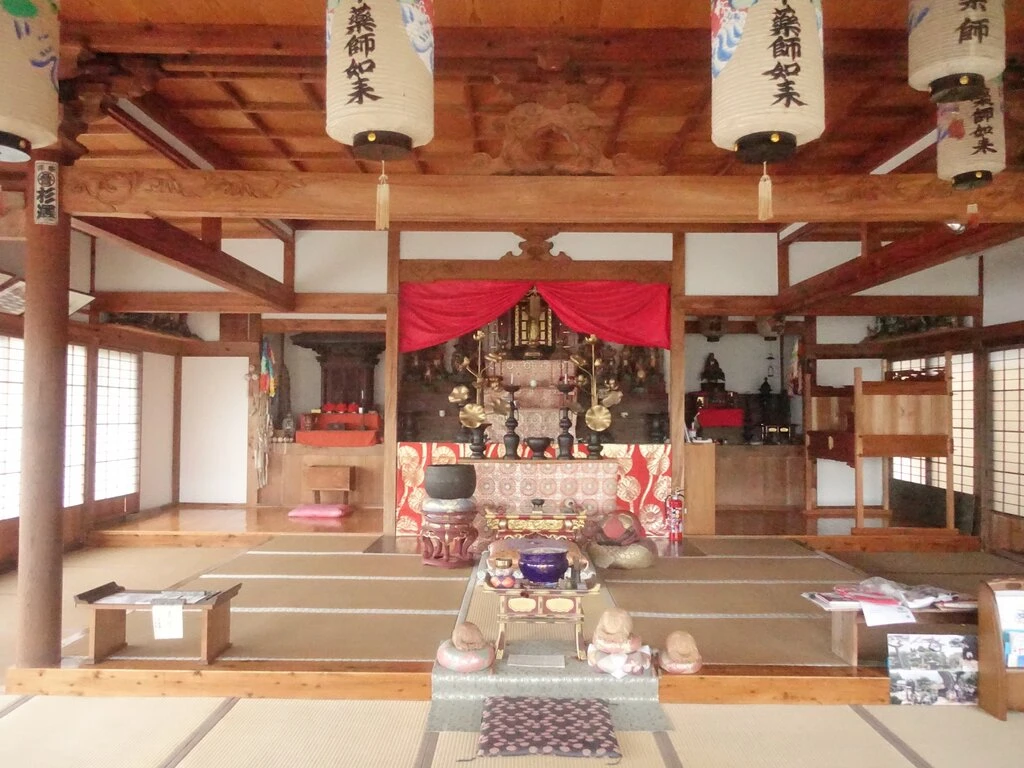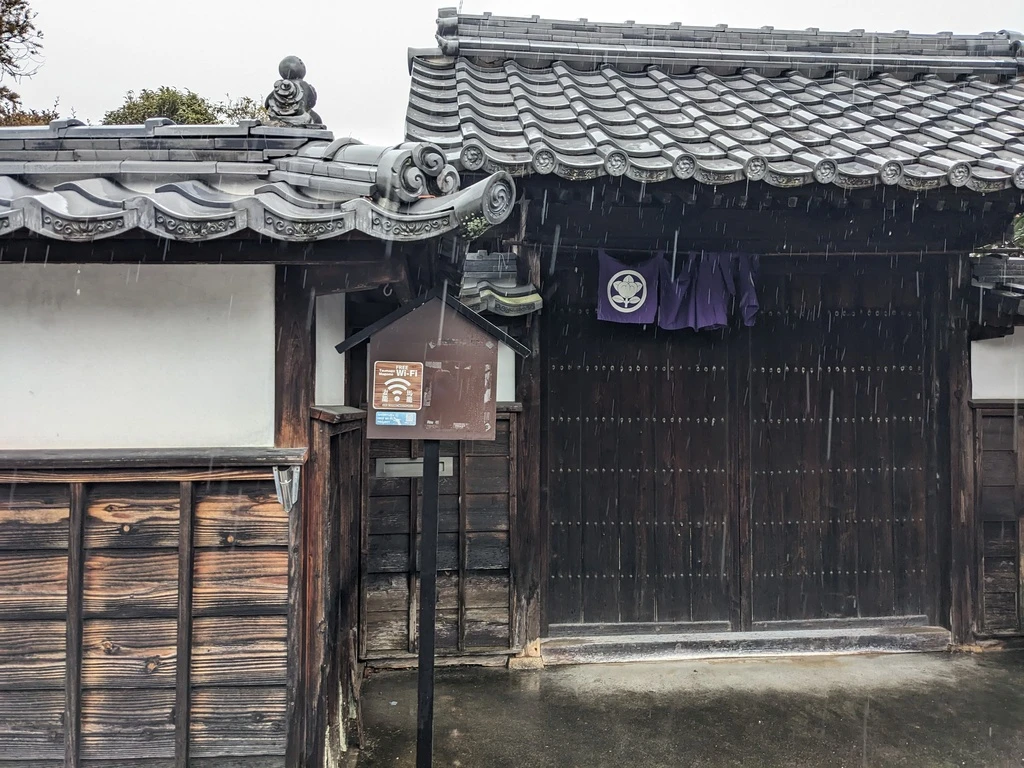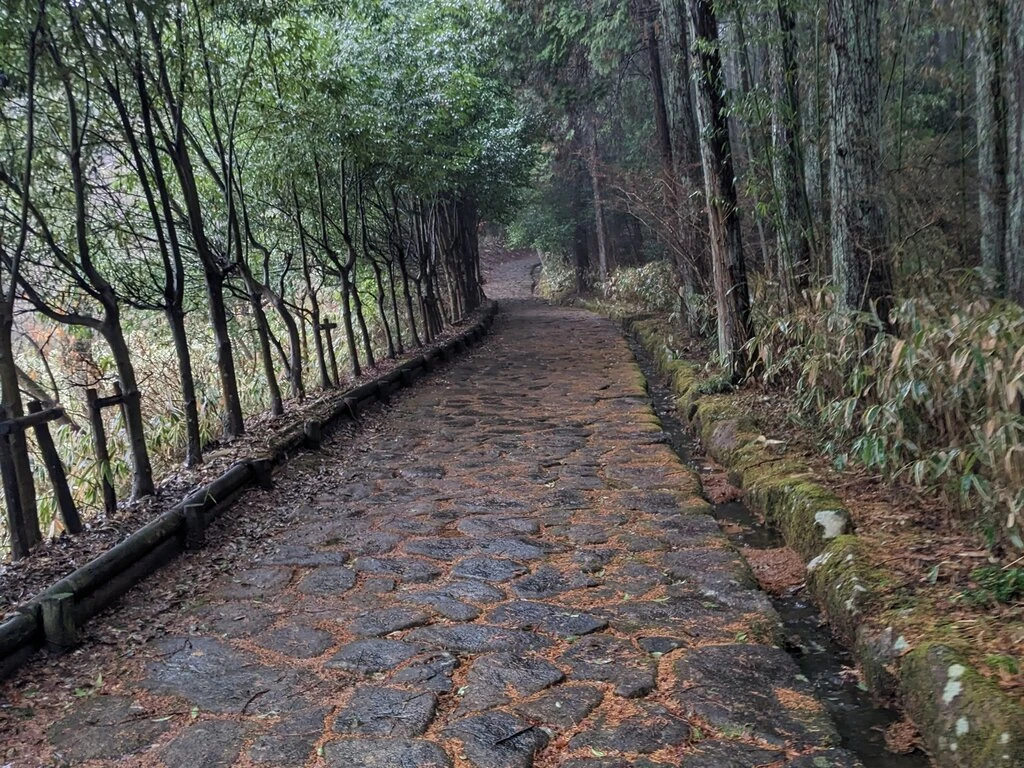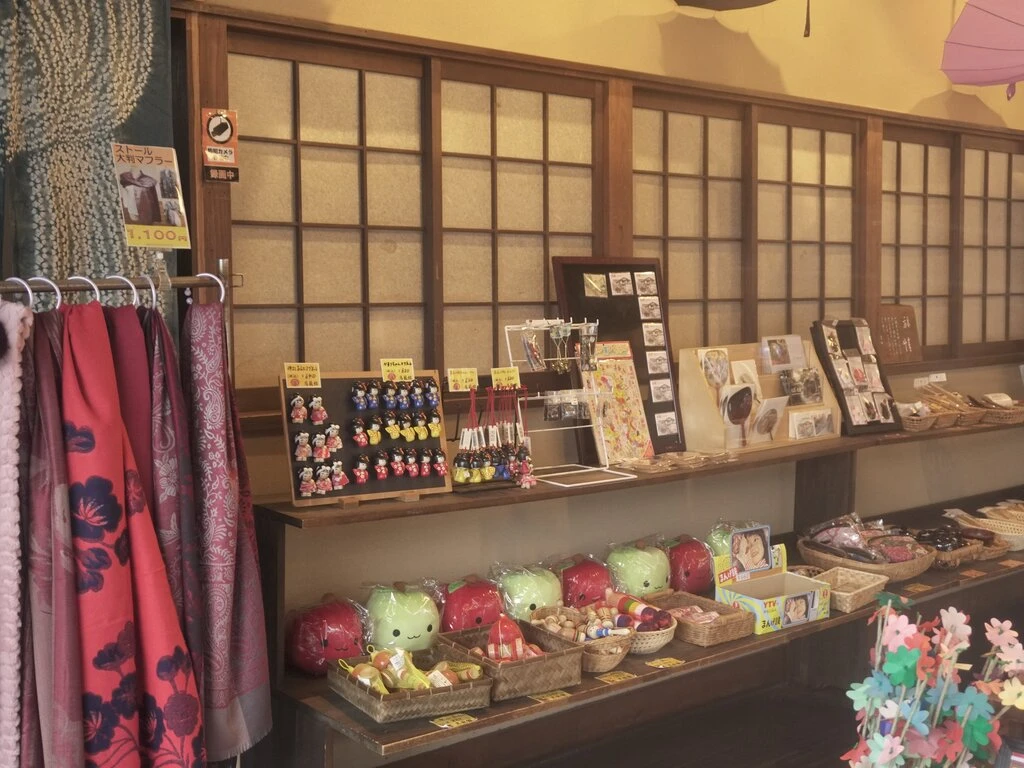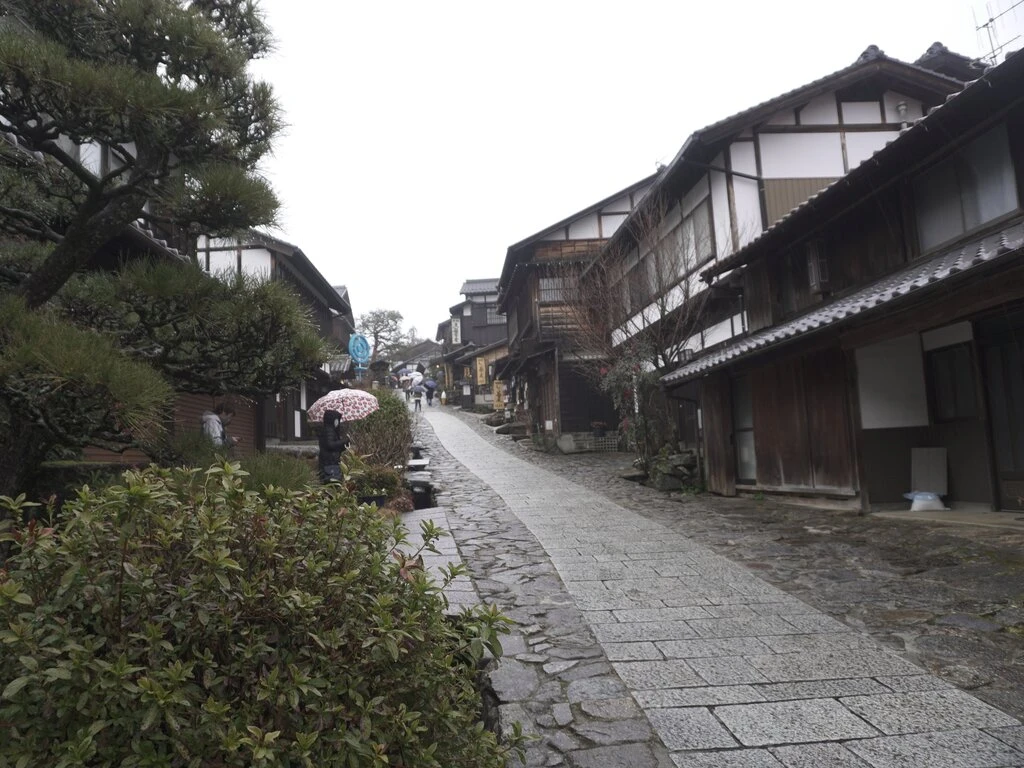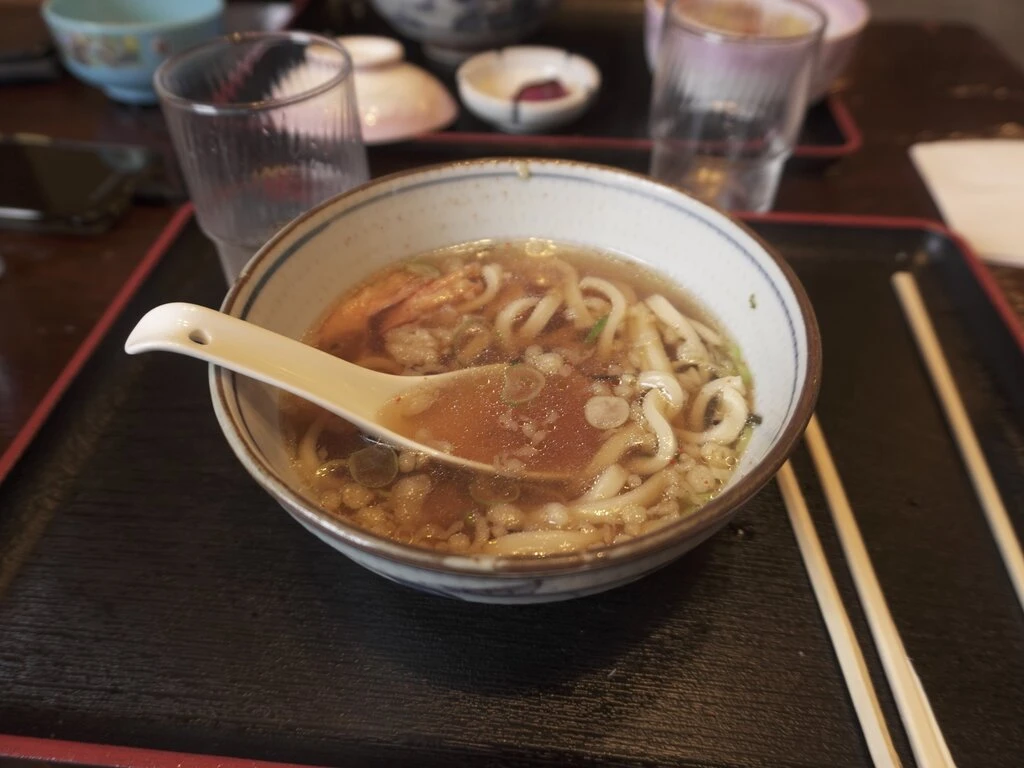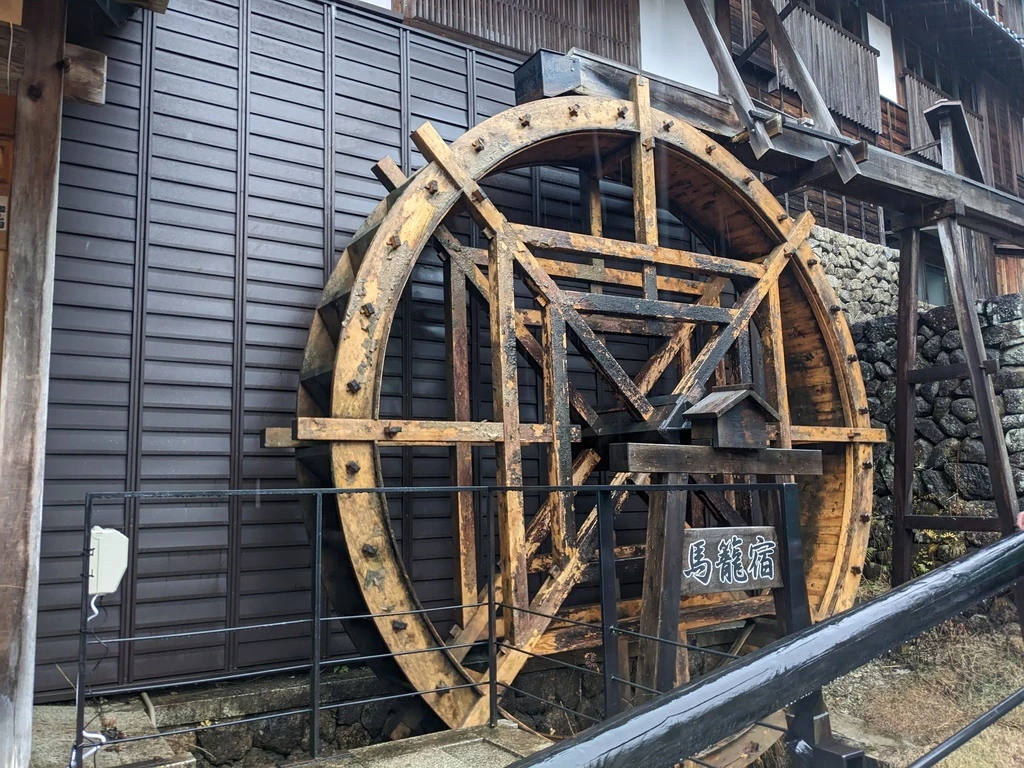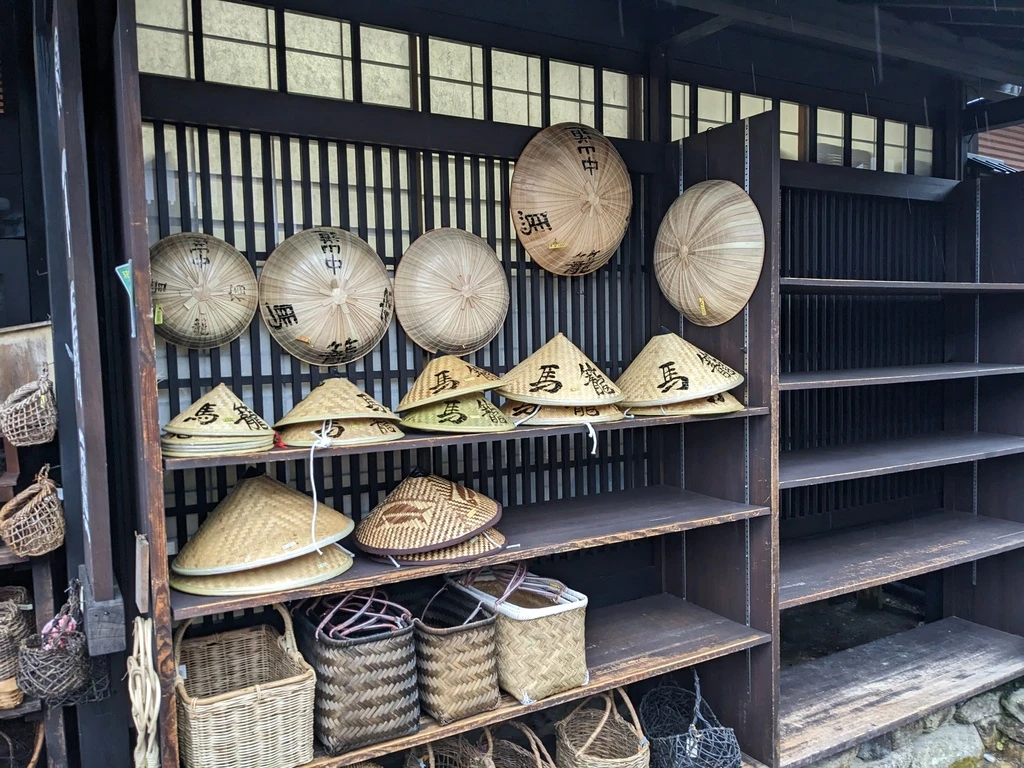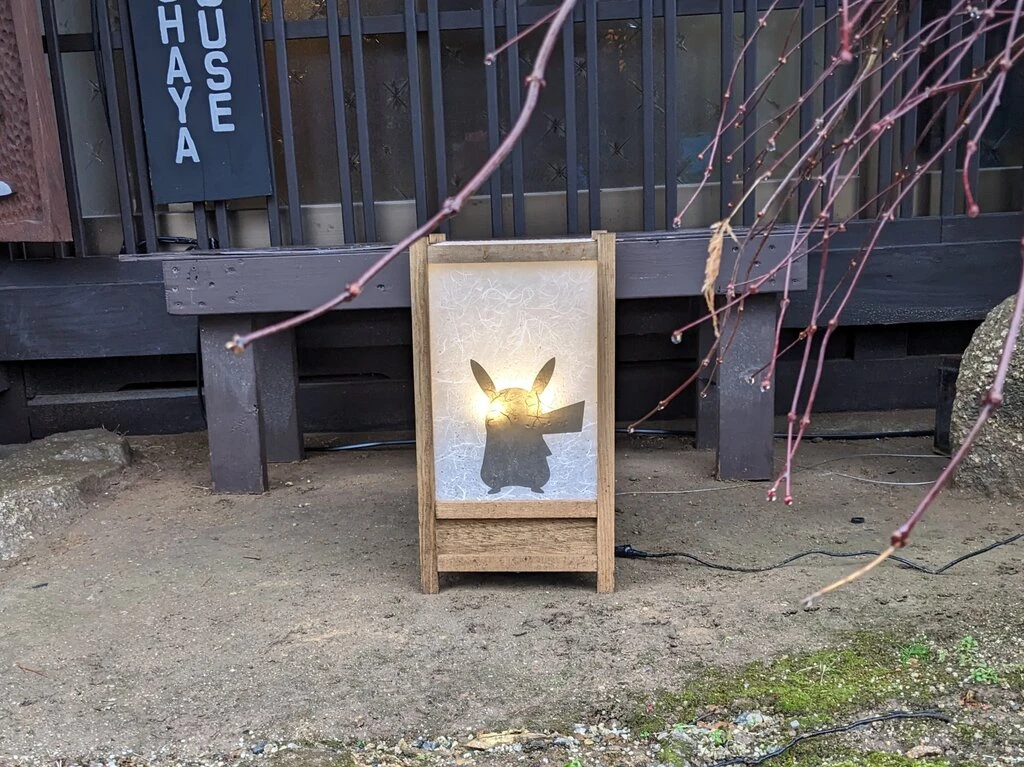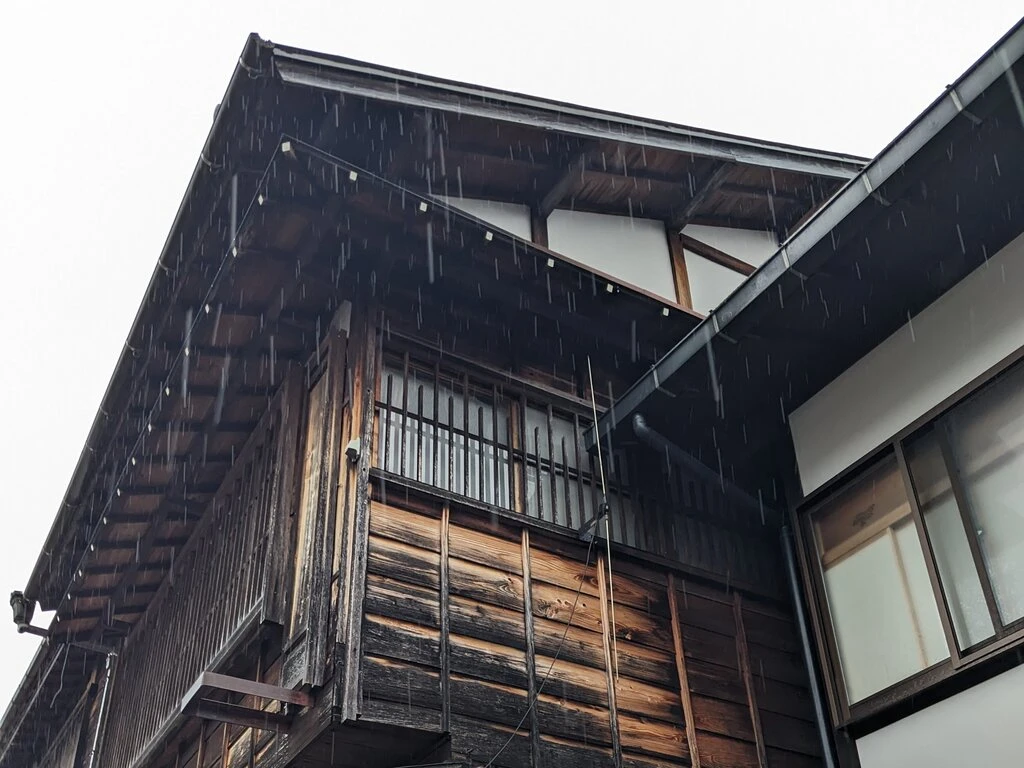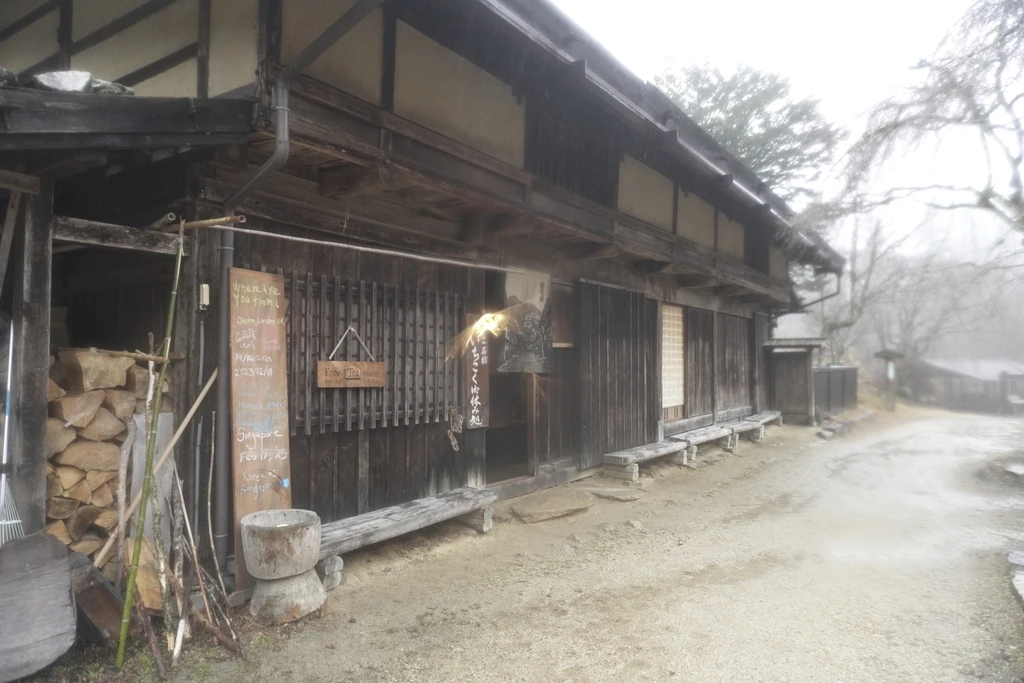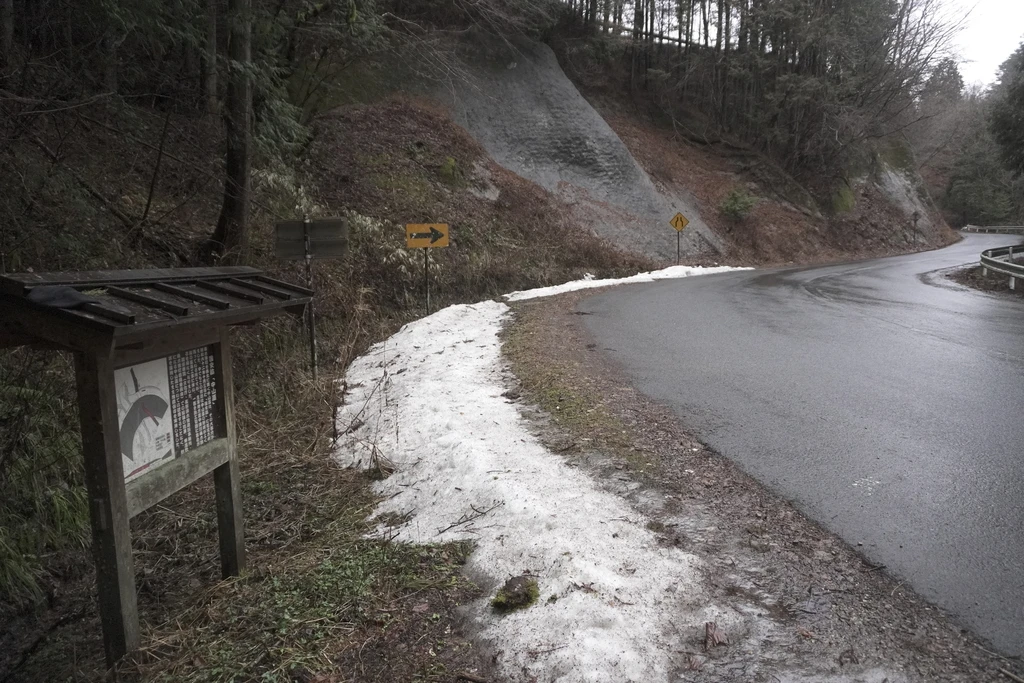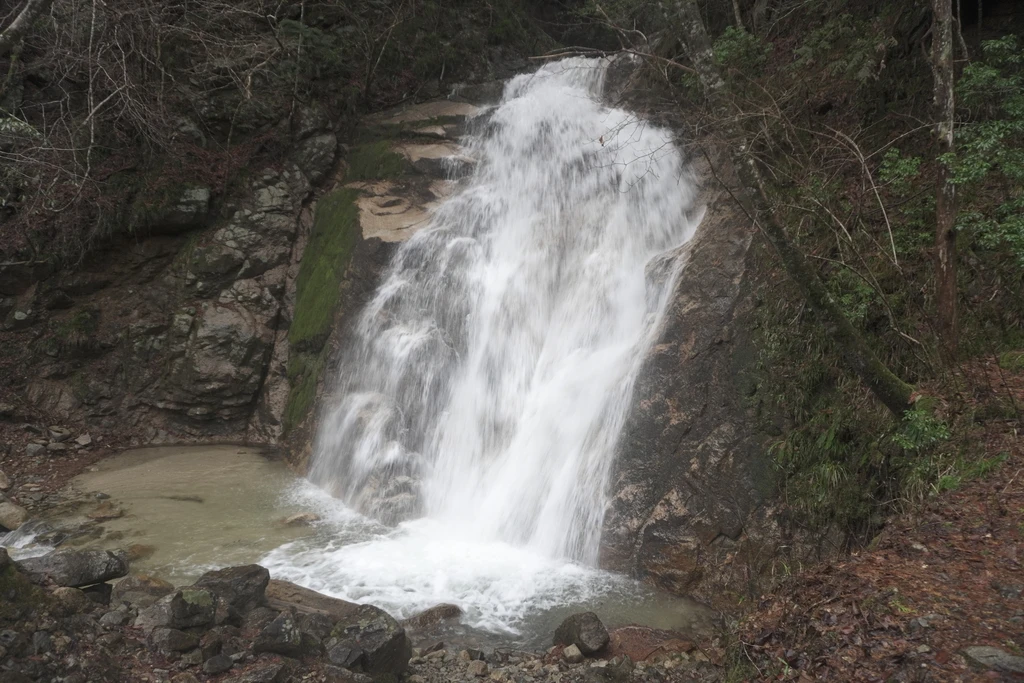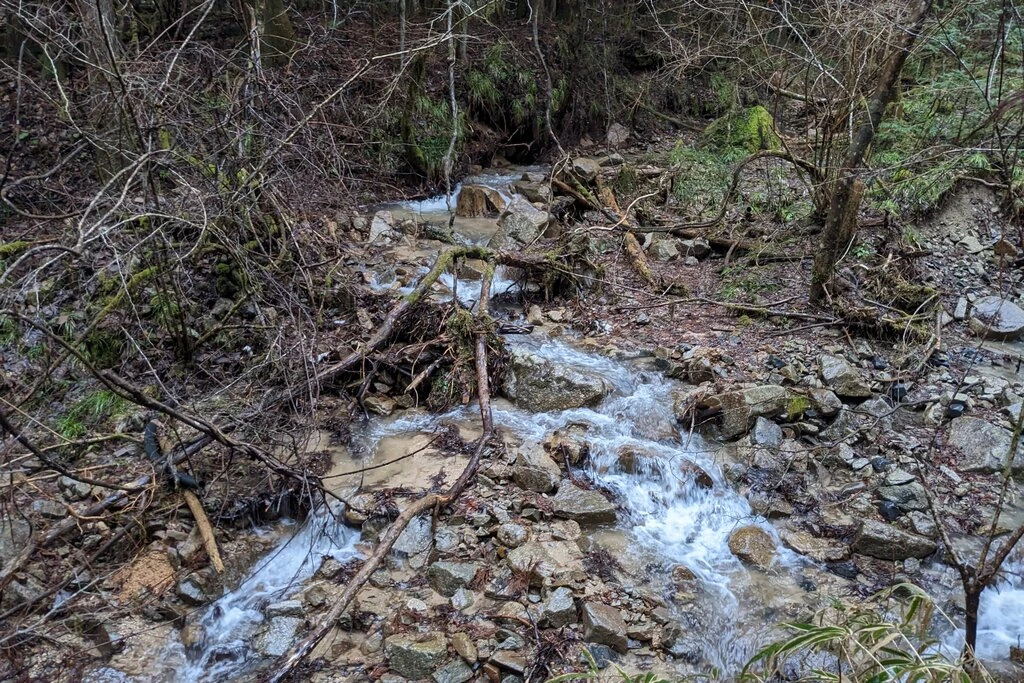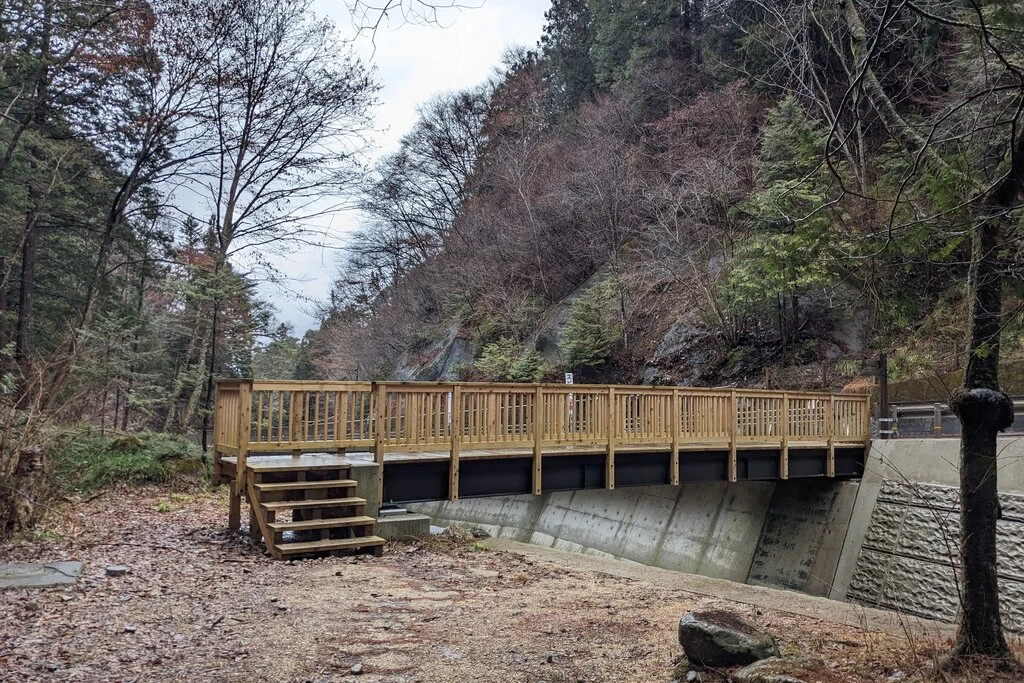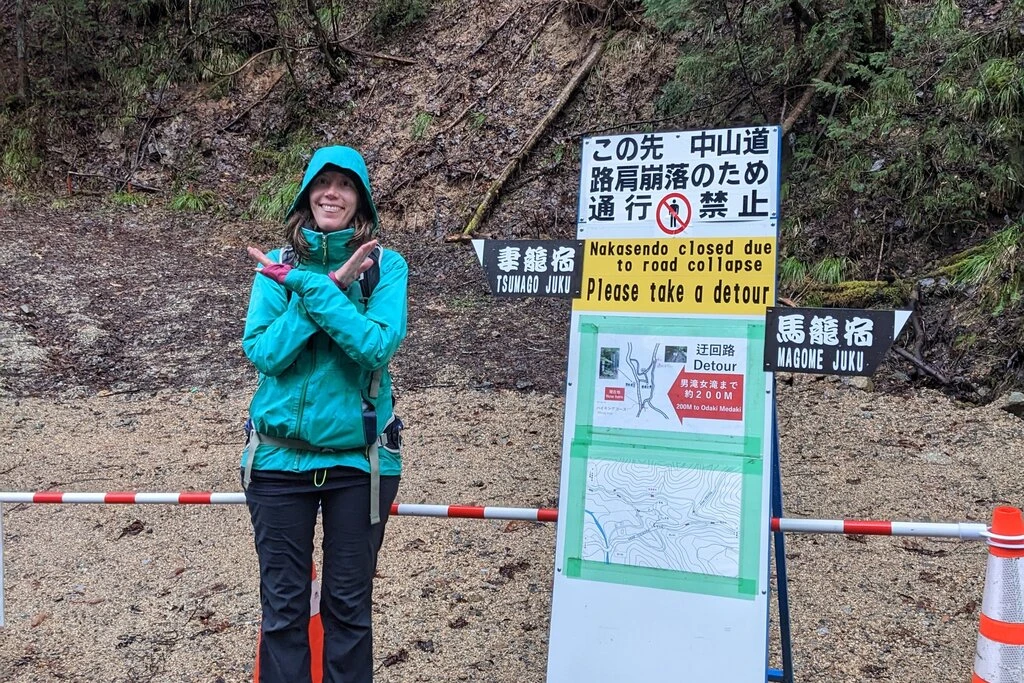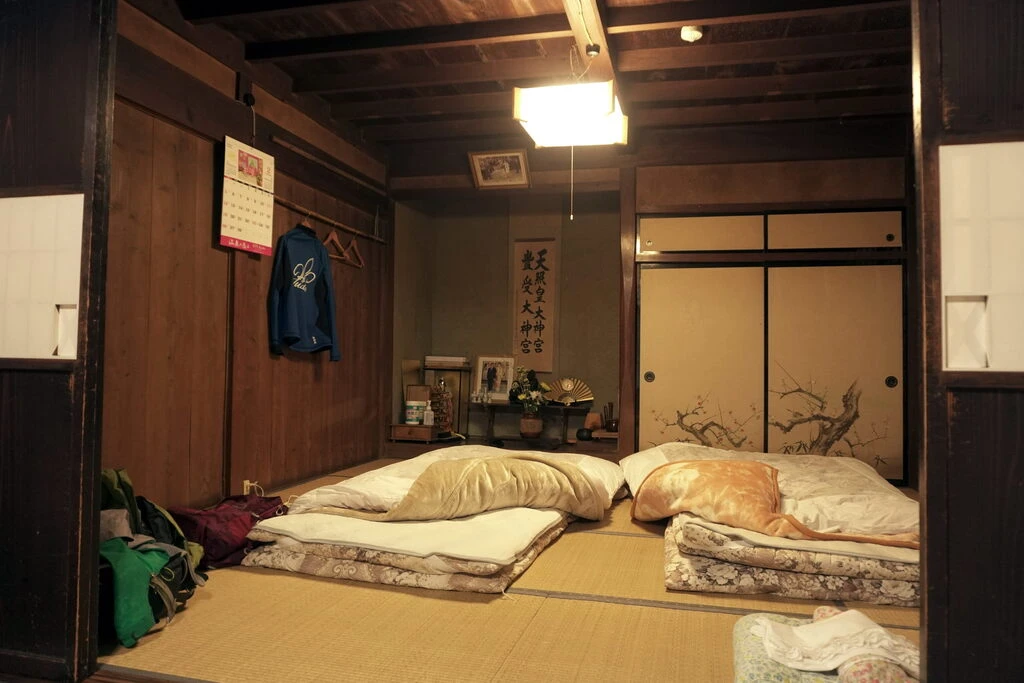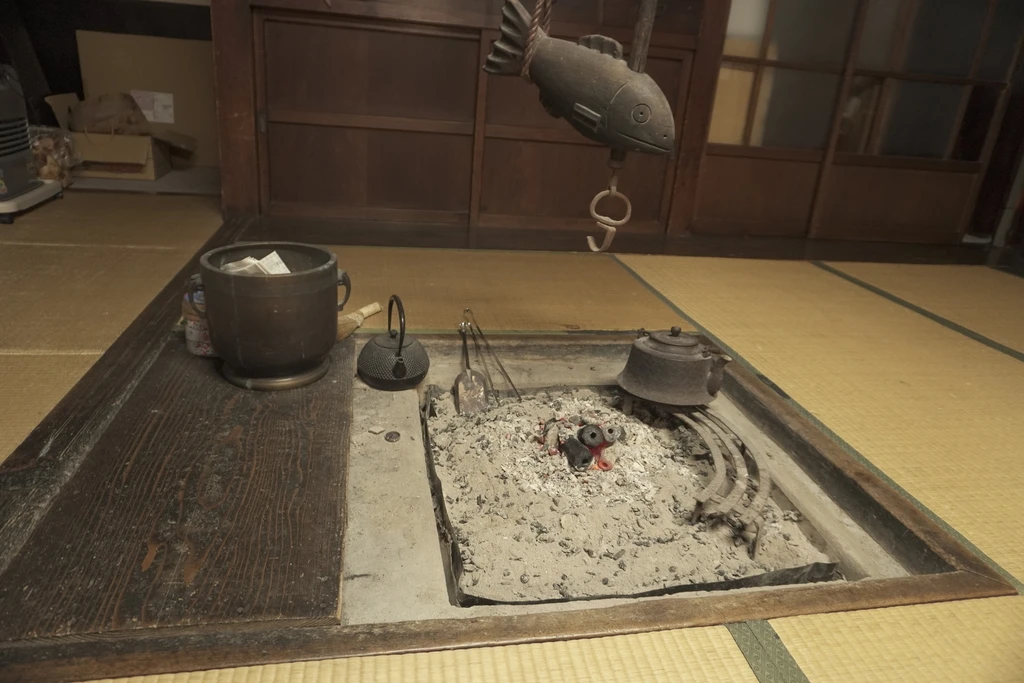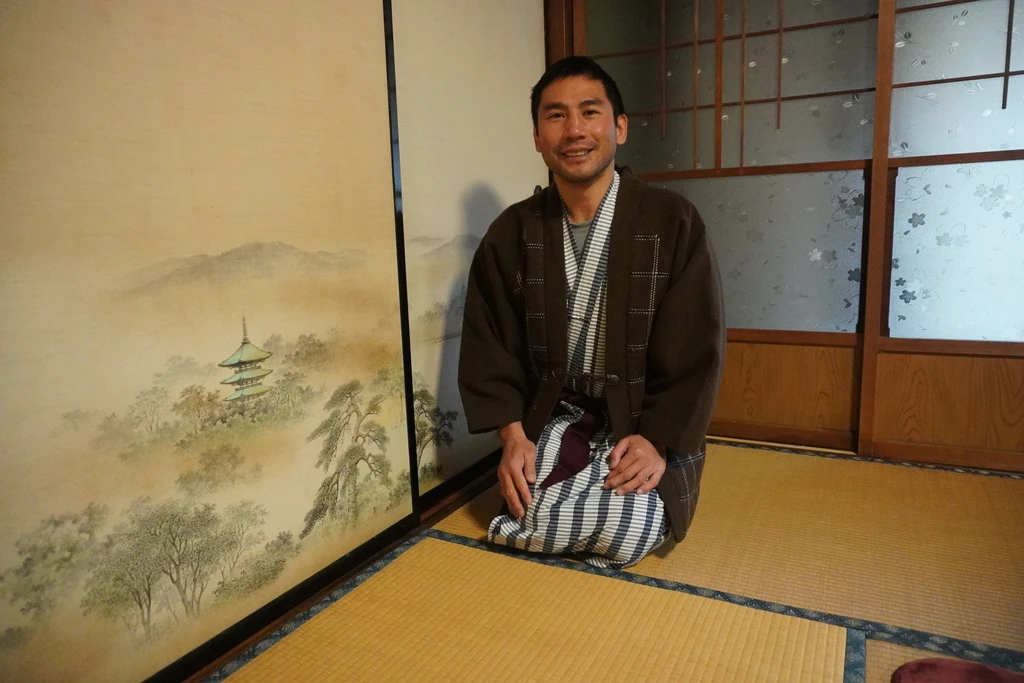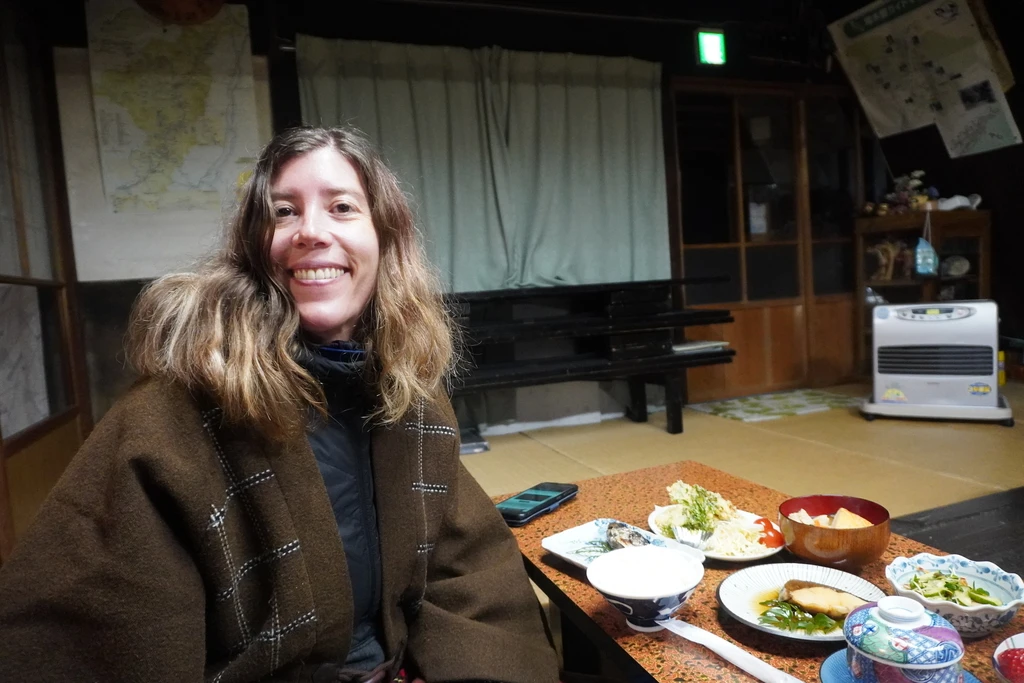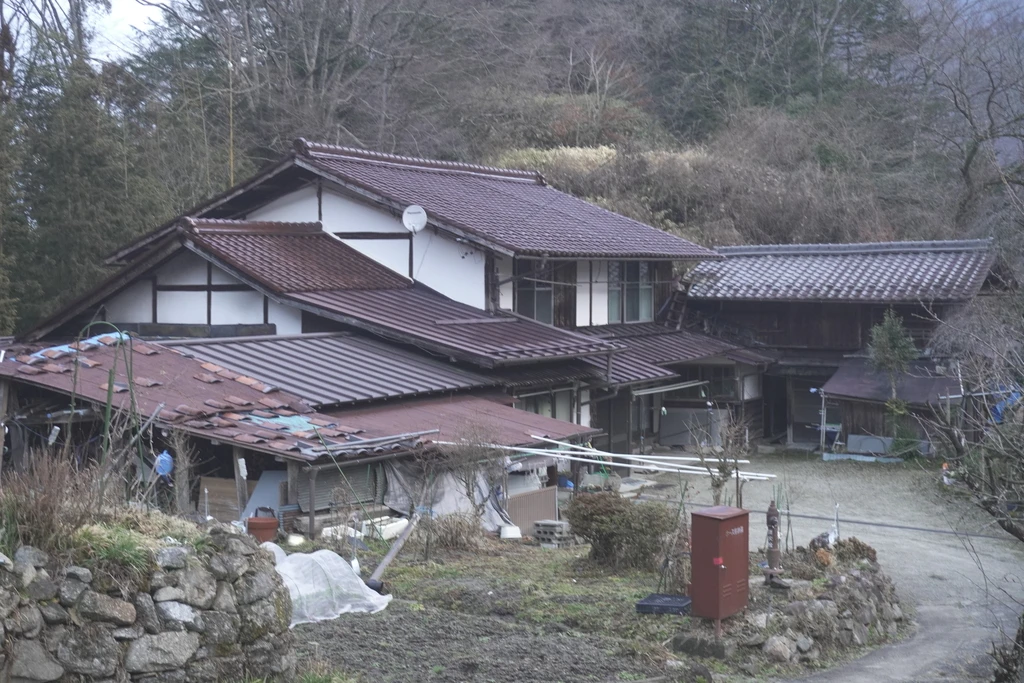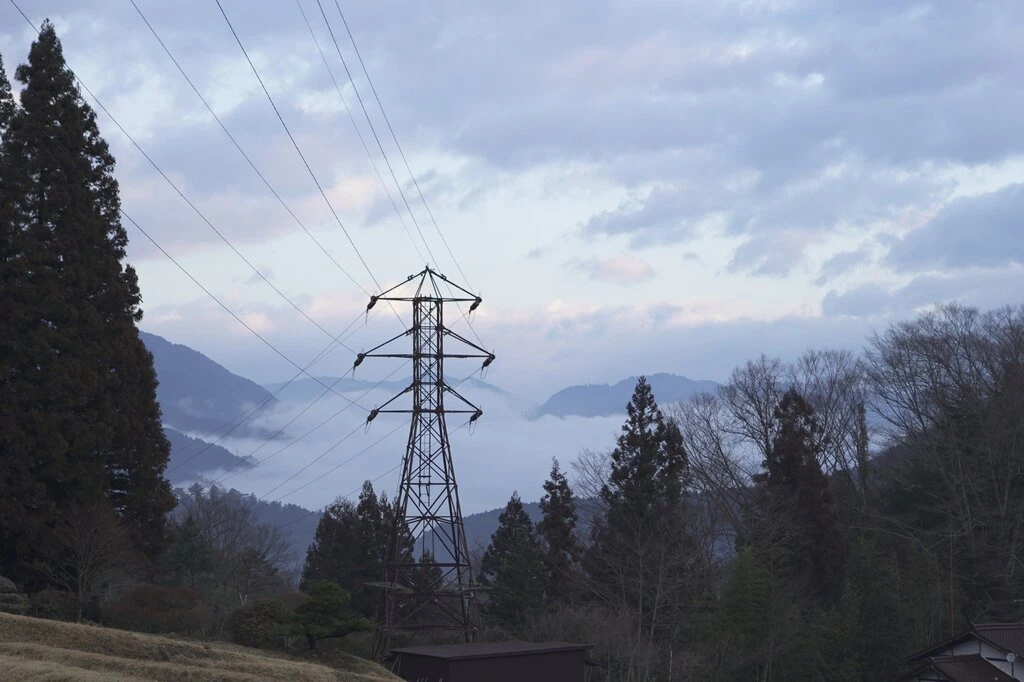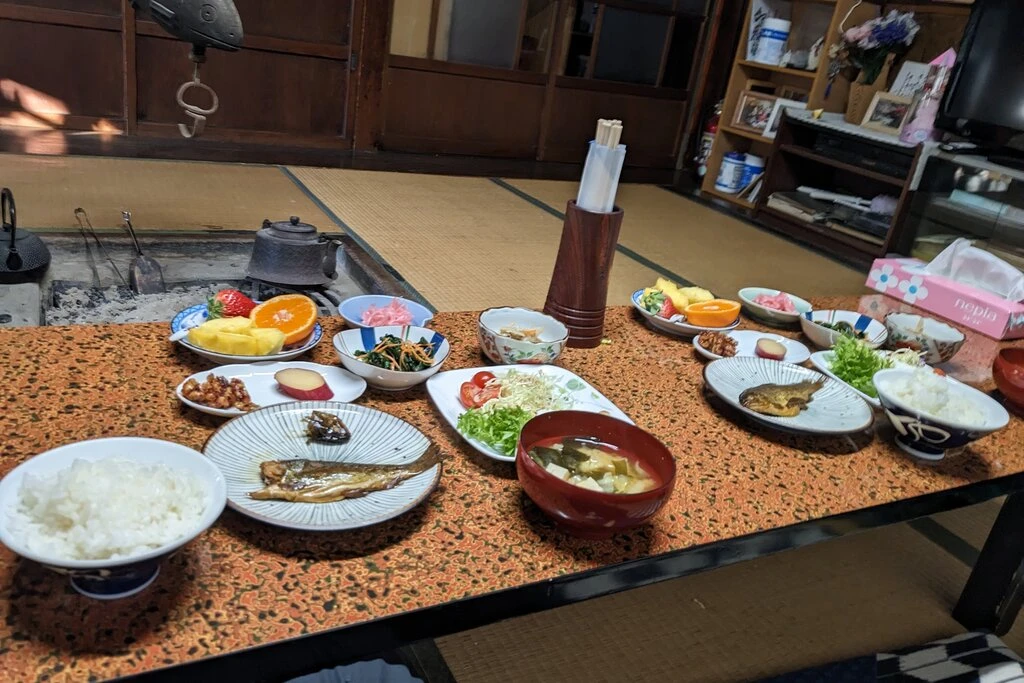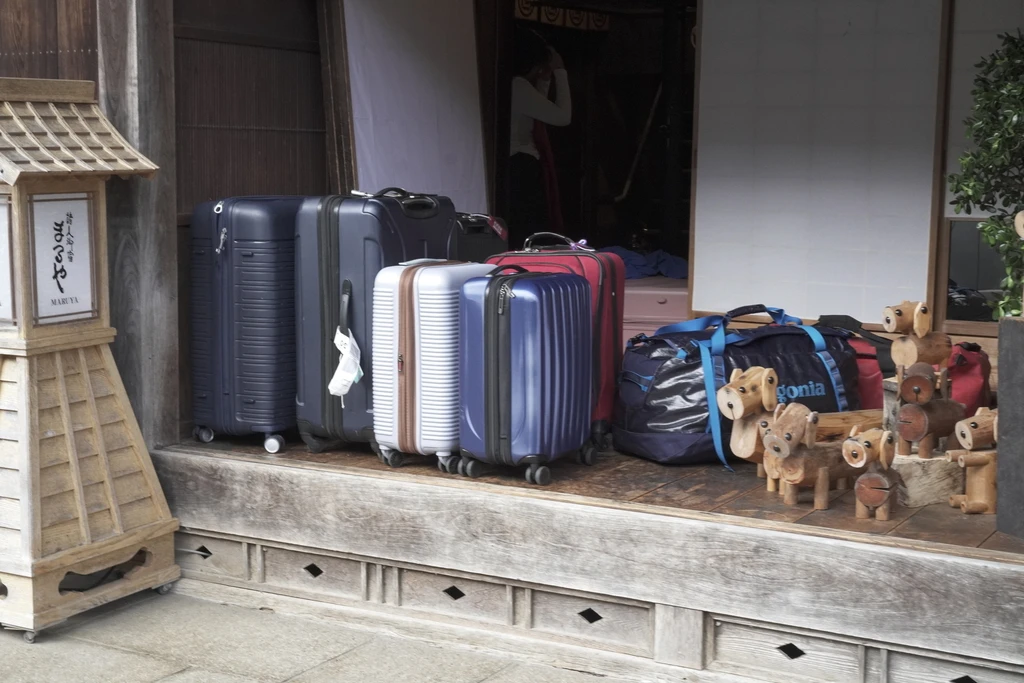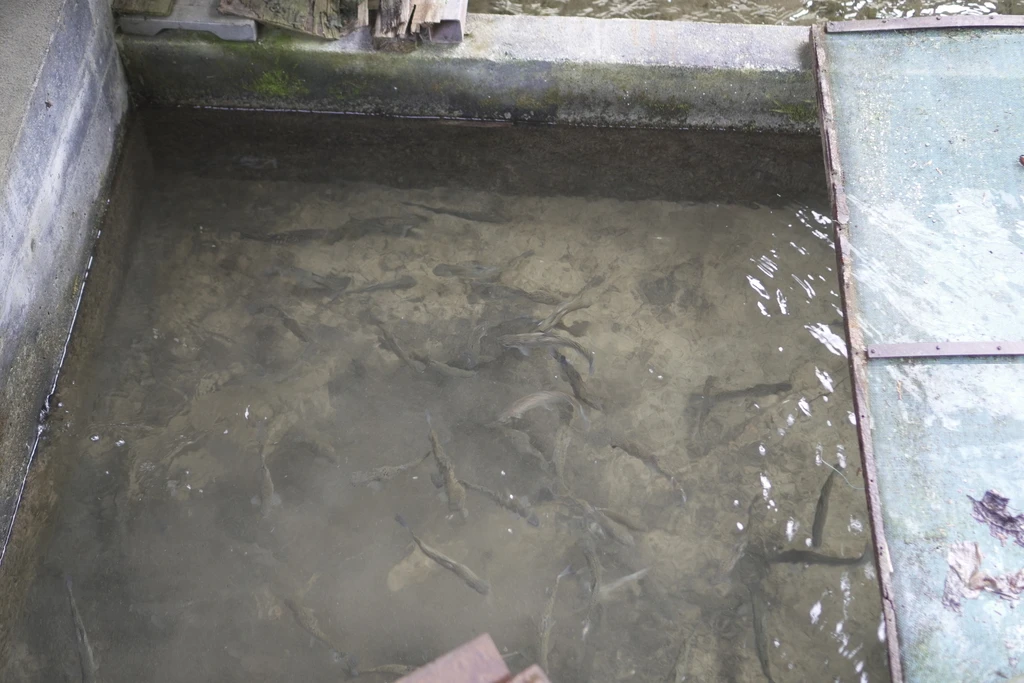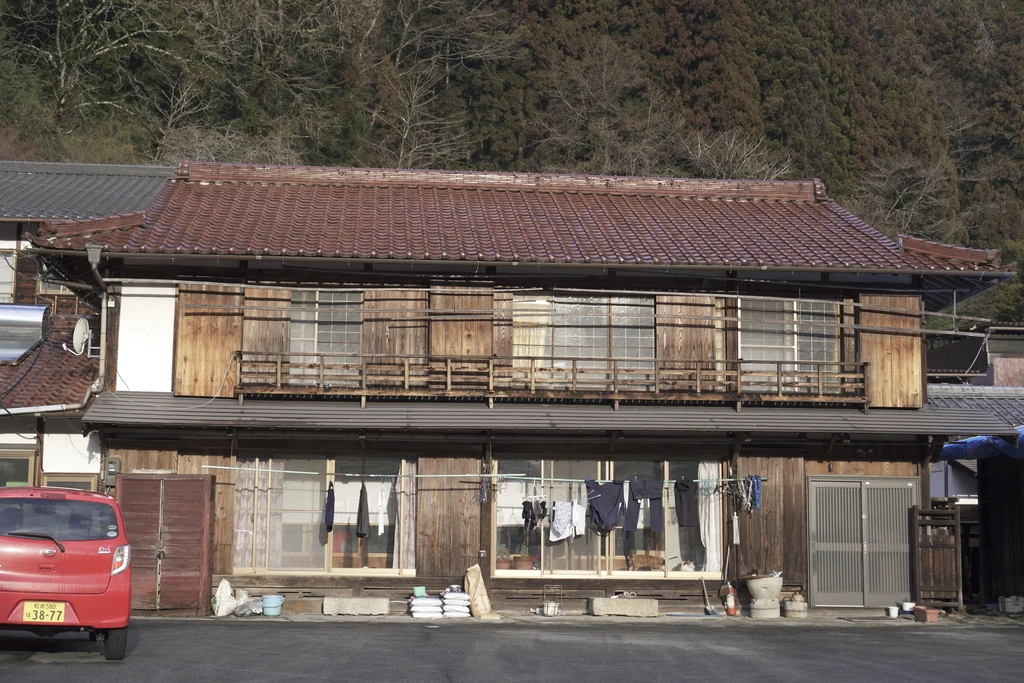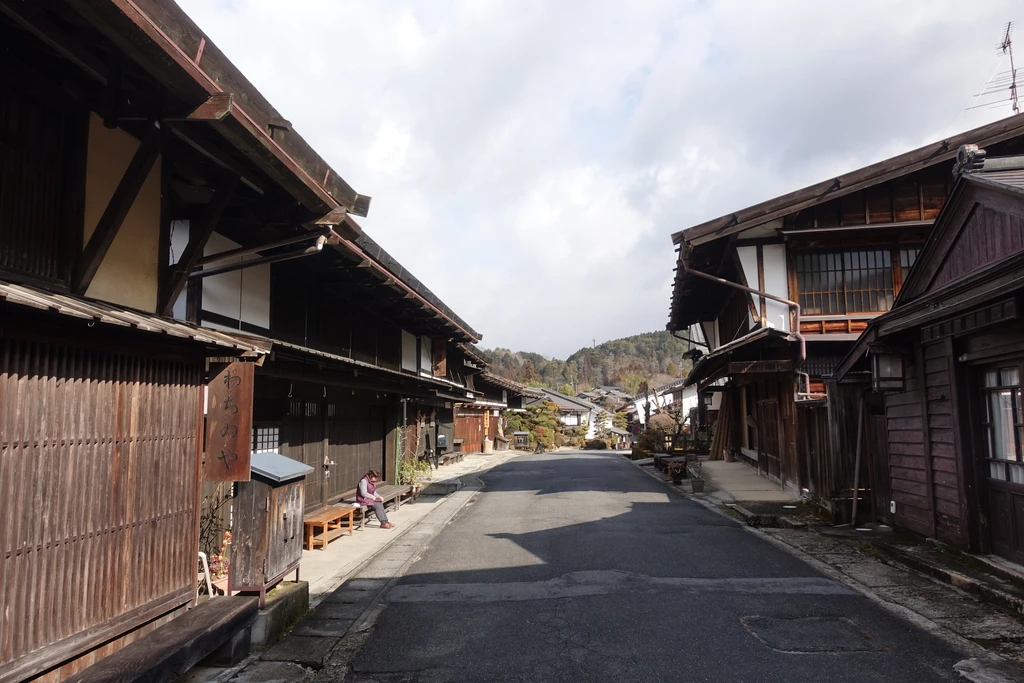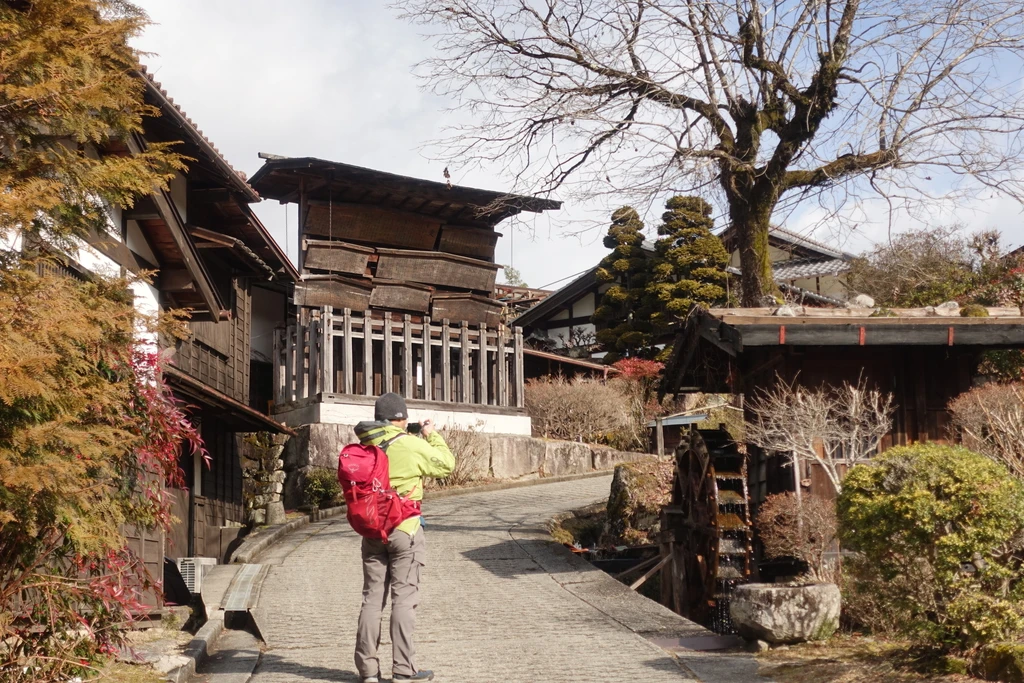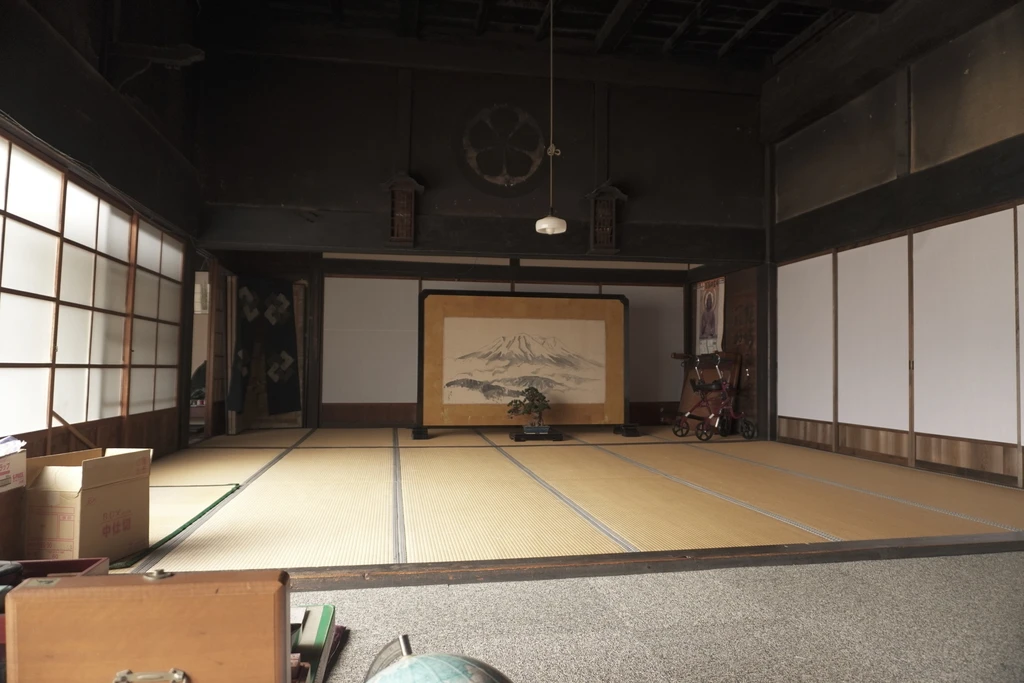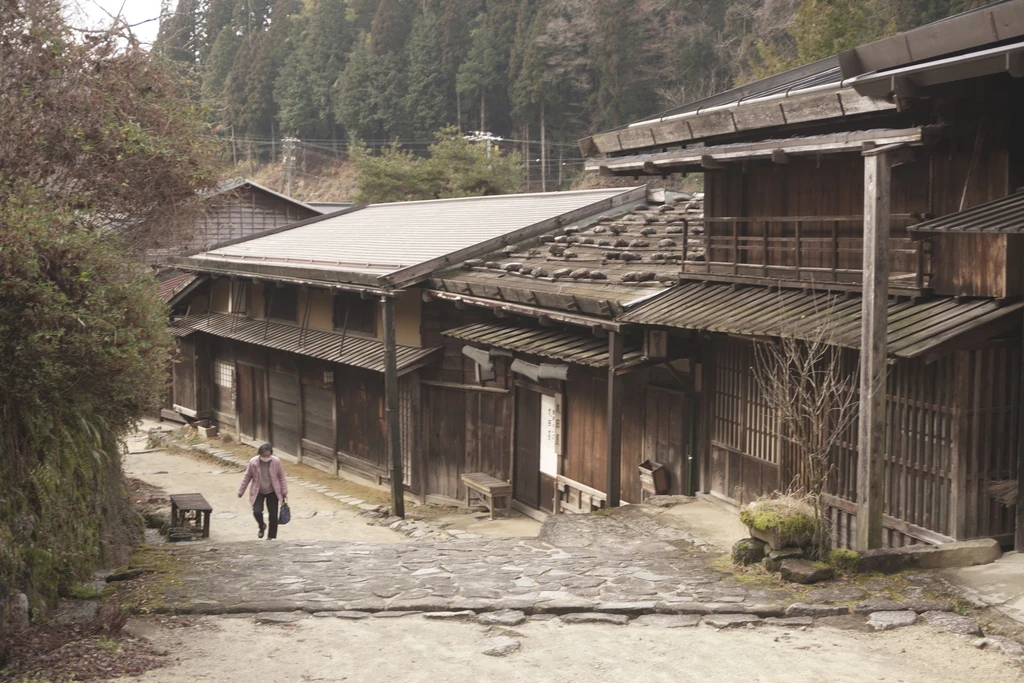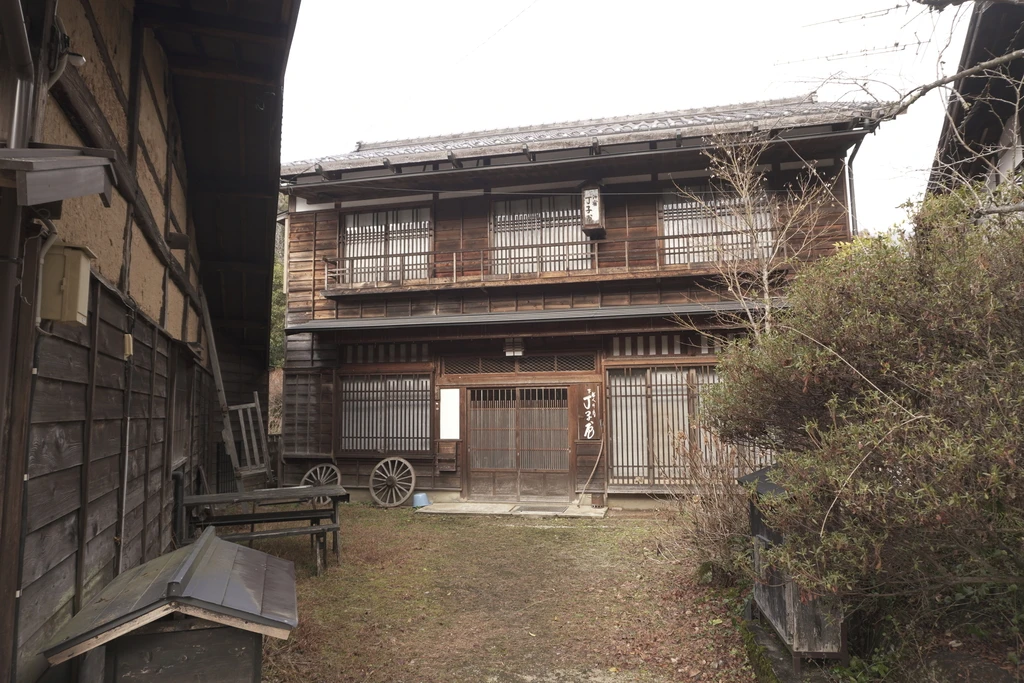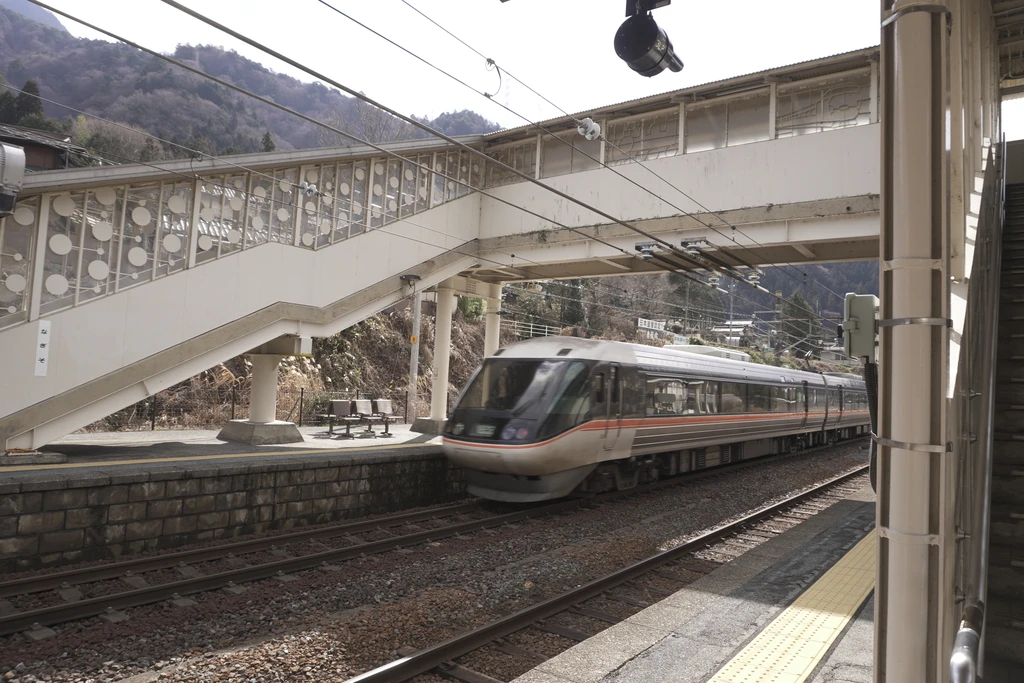For MP’s first trip abroad since the pandemic started, we agreed that Japan for Reading Week would be the ticket. Halfway between, so only 12 hours for both of us. (Well, a bit more than that on the way there and less on the way back; but way less than 24). We’d been to Japan in 2005 and MP had been twice more after that, in 2008 and 2012, to visit her friend who was living there at the time.
All the parts:
- Japan part I: cherry blossoms and part of the Nakasendo
- Japan part II: historical (looking) buildings in the Japan Alps
- Japan part III: two days in Hokkaido and one in Tokyo
Pre-trip planning
Once we decided to go to Japan, there was a potential analysis paralysis problem. So many things we could do, but which? We spent two days in December and January at the quite prescriptive Wānaka library and at the New Plymouth library, and consulted a bunch of guidebooks there. Our early-2000s Lonely Planet guide was in Waterloo and we weren’t.
We then built the spine of the trip around walking a bit of the Nakasendō, an ancient road linking Edō (Tōkyō) and Kyōto. As I understand it, the Tokugawa-era “alternate attendance” policy reinforced shogunal control by forcing feudal lords to go live in the de facto capital Edō every other year, and their wives and first-born sons to live in there all the time. (More money spent on real estate and travel is less money spent on raising armies!) We wouldn’t have time to do all the 300km of the road, but we could do a bit more than the 8km tourist highlight from Magome to Tsumago. I’d originally planned two full days, but shortened that to one day and one hour.
The other anchor destination of the trip was Hokkaidō. This wasn’t a ski trip and I wouldn’t have time for significant skiing (2h from Sapporo), but I could get in a half day near Sapporo. And I figured that we could see the tanchō, or red-crowned cranes, if we could get to Kushiro.
MP wanted to see the cherry blossoms, so we added early cherry blossoms in Miurakaigan just at the beginning. And, between the Nakasendō and Hokkaido, we would have one night in Takayama, two nights in Kanazawa (a luxury—two nights in one place is hardly slow travel, but still much more restful than being constantly on the move), and a stop in Matsumoto to see the castle. The goal would be to see historic districts and castles, which are generally not a thing in New Zealand. (Dunedin tries, but it’s not that historic). And any birds I could see.
Day 0: Arrival in Japan, February 17
We’d gotten flights that were both supposed to arrive around 5pm local time; MP had 10h55 of flying from Auckland and arrived 15 minutes late, at 5:05pm, while my flight info says I arrived at 5:07pm and I was off the plane at 5:20. (The Air Canada flight is often late by an hour, but mine was only 10 minutes late). Somehow MP managed to clear customs enough before me that I didn’t see her in line, even retrieving her checked luggage. I had no checked luggage and got past luggage claim by 5:56pm.
Anyway, the plan was to position ourselves on the first night so that we could see the early cherry blossoms in Miurakaigen early the next day, so we got a hotel room in Yokosuka: 2 more hours of train from Narita, but then only 30 minutes (the next day) to the cherry blossoms. Of those 2 hours on the train, 1 was to Shinagawa on the Narita Express and then the other hour was on the local Keikyu Main Line: basically a commuter rail.
The Mercure Yokosuka had staff with excellent English, likely as a result of being close to the US Navy base. The hotel wasn’t super cheap at C$128, but it was only a 10 minute walk from the station and comfortable for our first night in Japan. We got some snacks at the convenience store at the Yokosuka train station and called it a night, checking in to the Mercure at 9pm.
Logistics digression: transport, comms, and money
We’d ordered 7-day Japan Rail Passes for a 9 day trip, so the pass would only start on day 1, and we paid ¥8740 cash (well, via credit card) for passage for two to Yokosuka. This would be much less than the ¥9900 per person for Sapporo to Kushiro we’d planned for day 7. (In the event, the last-minute Kanazawa to Sapporo train trip would also have been super expensive, but we didn’t have to pay, since we had our rail passes). And the other bonus of exchanging the voucher for a pass at Yokohama on the next day was that we avoided the lineups on arrival at Narita. We had paid about ¥31500 for each pass.
The other logistics things we’d need were: 1) I’d ordered two unlimited 8 day data cellphone SIMs from Mobal for ¥4000 and had them shipped to the Yokosuka hotel (I should have staggered the validity periods); and 2) I had planned to withdraw money using my Wise card. So we didn’t have data between leaving the airport (except for a brief bit on the Narita Express where it worked—usually it doesn’t) and getting to the hotel. I got to a convenience store at Yokosuka station and tried to withdraw money, but that didn’t work. A few days later I noticed that I had to enable the “allow ATM withdrawals” button for my card on my Wise account.
At the beginning of the trip I had forgotten where I’d put my Wise card, and at the end of the trip I had forgotten where I’d put my keys. Oops. Fortunately I found both these things.
Day 1: Miura Kaigan early cherry blossoms, February 18
The train from Yokosuka to Miura Kaigen was again on the non-JR Keikyu Main Line so the JR Pass wouldn’t have helped anyway, and it was pretty cheap at ¥250. I had planned a very ambitious 7:23 train from Yokosuka; we actually got to the train station by 7:52 and onto the 8:30 train to Miura Kaigen.
Stepping off the train about half an hour later, it felt like spring, and was a warm, sunny day, at about 14°C. We were maybe a week early for peak early blossoms at Miura Kaigen. Hordes of people came later, as we were leaving, around 11. We noticed traffic guards with pink vests, presumably to match the blossoms, and signage for drivers about not hitting people.
There were some vendors who had set up at the train station, and then more vendors of tasty food at the main place, Komatsogaike Park. The street food was actually kind of pricey compared to other food in Japan, though not in absolute terms: ¥700 for meat on a stick.
I managed to see 6 bird species; most of the Japanese birds are new to me. The warbling white-eye is a lot like the New Zealand silvereye, and they are indeed related. The white-eye is easier to spot in leaf-less trees, though. I have few silvereye pictures.
Onward to Nakatsugawa
We took the Keikyu line back to Yokohama and then got (with no waiting in line) our JR passes and seat reservations for our first shinkansen segment (270kph) on this trip, Shin-Yokohama to Nagoya, bookended by two regular (Rapid to Shin-Yokohama, and Limited Express from Nagoya) trains.
Leaving Yokohama it did start to get cloudy, and it rained on us in Nakatsugawa, where we stepped out of our lodging to get dinner at a nearby yakuniku (grilled meats) place, Suzuya. Pictures on the tablet menus and Google Lens were useful for ordering. We successfully ordered tasty food. They had actually brought us upstairs where there were vents above the grills; upstairs also was a big plus in that the downstairs was full of cigarette smoke, but the upstairs was not at all. Weird thing about Japan is that smoking in bars can be OK but not on the streets of Shinjuku in Tokyo.
We stayed at the Ryokan O, which is not really a ryokan, but does have sleeping on futons on tatamis and shared bathrooms. It was quite economical (C$74) and totally fine. We were at many places with shared bathrooms in Japan, and I don’t really have a problem with that. Sure, slightly less convenient, but also cheaper. I’ll do that.
Day 2: Nakasendō (Nakatsugawa to Otsumago), February 19
The main active part of this trip was walking a small part of the ancient Nakasendō, which connected Edo (Tokyo) to Kyōto. We’d walk 16km, basically from the Nakatsugawa train station to the Nagiso train station, through some moderate mountain passes, with a stop at a minshuku outside Tsumago.
I did not want to bring my stuff with me on the hike. It was forecast to rain and we had 2 backpacks each. Maybe packing lighter was possible, but I also had a bunch of winter clothes with me, which I did not regret having at all. I’d heard about luggage delivery, and we managed to get our 2 bags sent ahead to arrive next-day (between 4pm and 6pm) at Takayama for ¥3200. (Same-day seems mostly unavailable). We had some trouble communicating with the hotel staff at the Ryokan O about the forwarding, and it’s a bit of a leap of faith to expect that one’s bags will arrive, but ours did.
We also had to arrive at our minshuku Kameyama by 5pm or the owner would worry about us arriving in the dark. So we left at 7:40 and stopped by 7-11 (way better than in North America) to get some provisions for breakfast. There was also a brother and sister (brother lives in Japan, sister in Ireland) at the lodging who we saw again at the 7-11; they had done it yesterday, and thought it was great, though they regretted that we’d be doing it in the rain.
Digression: The Great Japanese Novel
I’d also started to read Before the Dawn by Tōson Shimazaki before leaving on the trip, though I didn’t have time to get through much of it pre-trip (I would have liked to borrow it a bit earlier than I did, but I wanted to finish my COVID isolation before going to the library). I did not want to lug an extra kilogram of paper, so I continued reading an ebook version courtesy of the Internet Archive. Reading the book gives some more context on the places that I walked through. Then we ordered tea-over-rice in Takayama, which was one of the foods mentioned in the book. Also mentioned was eating 30 thrushes. I saw lots of thrushes but can’t really imagine eating them.
Walking: Nakatsugawa to Magome
We really liked this part of the walk. It’s mostly on pavement, and someone on the Internet had rated it as “easy”. There’s still more than 0 elevation gain, though. It’s not hard, but it’s not a cakewalk. It is very doable though.
We set out from the Nakatsugawa honjin (lodging for daimyos) at 8:15 and walked past lots of shrines and some parks. There were certainly historical-looking buildings even on this part of the way, and some modern houses and hotels too. Japan, like NZ and unlike Canada, has lots of public toilets.
We got to looking for Nakasendō trail signs. There were enough of them to make navigation pretty easy. GPS isn’t great in terms of telling you where the trail is (or our map data anyway).
There was a horde of fast walking older Japanese people. They meant business. We were slightly faster than them, but whenever I stopped to take pictures, they would catch up to me. I was taking waterfall pictures and then got stuck in the horde. “Sumimasen!” (excuse me!) and they let me pass. They were not taking pictures. They had lots of rain gear.
Speaking of the rain, it was a bit wet, but really did interfere with taking pictures. Wet lenses are not great. I tried to alternate between the mirrorless camera, the point and shoot, and the phone, trying to find a lens that was dry enough.
old-school paving stones.
Magome
This town was the centre of attention in Before the Dawn and is now a restored historic village. In the right season, it seems like it would have tons of tour buses. There were people there in February, but not hordes. We got there at 11, well ahead of schedule for arriving in Otsumago by 5.
Magome is a tourist spot in 2023 and so there are things like souvenir shops (stuff made in China) and ATMs and free wifi hotspots. Also Pokemon Go stuff. But all the buildings do have an Edo-era look, as far as I can tell.
Souvenir shops do have the advantage that the rain isn’t falling on one’s head, at least. Eating lunch in a restaurant shares this advantage.
The historic-looking main street goes up a slope. There are lots of water wheels everywhere on the Nakasendō, but Magome has a bunch of them. Makes sense with the topography and the water.
Lunch was at a decent udon shop. We tried two other places that were supposed to be open but weren’t. Also got the chestnuts on rice, which are supposed to be a Nakatsugawa special. They’re fine.
Walking: Magome to Otsumago
The last part of our walk on this day was to our lodging, Kameyama, which was 20 minutes before Tsumago. On the map it’s in Otsumago. The Magome to Tsumago segment is the most famous Nakasendo segment. It’s certainly a well-preserved walk in the woods, i.e. a semi-wilderness experience. (There is an on-road detour, presumably due to a slip). There is moderate elevation gain reaching a high of 790m; when we were there, it was enough to see a bit of snow on the ground, but we were never in the snow and we didn’t require traction aids (yaktrax). All the houses had shovels though! I feel like I could have used the yaktrax in Sapporo much more than on the trail.
It did rain on us pretty heavily especially at the start, but it wasn’t cold (latitude 35°N); I think it was around 10° that day. The Tateba teahouse was most welcome.
The trail detour takes us right past the Otaki metaki (male and female) waterfalls. I guess what’s special about these falls is that there are two falls right next to each other. Normally it takes a side trip to see them. In general there was a decent number of waterfalls, some artificial. Not as many as on a NZ tramp, though.
Finding a place to stay in Tsumago had actually been a mission. Many places were either not open in February, or full. In the end, we called the Tourist Information office in Tsumago and they managed to book Kameyama for us, which is technically a minshuku; it seems to be a one-woman show and basically a guest suite, with a bath. The owner was really concerned that we might be stuck out after dark, but we managed to arrive around 3. I had a chance to read Before the Dawn in the place it was about, though on my phone, and also other things.
Dinner and breakfast were tasty, including, in particular, grilled fish. There was an ofuro (bath), which seems to help my ankle after the walk. Of course, we had to do yukata pictures.
(Why the fish weight over the fireplace? I read elsewhere that there was symbolic value in putting a water creature over the fire. You know, the thing that could burn the wooden house down. Fireplaces in other parts of Japan didn’t have metal fish.)
Day 3 part 1: Nakasendo (Otsumago to Nagiso), February 20
I was glad that we had requested an 8:00 breakfast; the Kameyama owner has to get up earlier to prepare it. With an 8:00 breakfast, we’d be out of her way before too late, but not require her to be up too early. There was either a bus at 9:33 from Tsumago or a 3km walk, and we’d aim for the 11:00 train to Matsumoto. We opted for the walk.
But first, I thought I’d try to get some sunrise pictures. This is always challenging for me. Jetlag helps a bit, but it’s still early. Kameyama is a bit up a hill, good for pictures. There was low-lying fog and a couple of birds, though for the early morning walk I only brought the 16-50 and 35mm lenses. I managed to photograph a dusky thrush and got a picture of couple of fish in the fish farm (the source of the grilled fish, perhaps?) Not much of a sunrise though.
We left at 8:49 and got to Tsumago at 9:17. Then we took as long as we wanted to admiring the historical-looking buildings and shrines. We even went up to the Tsumago viewpoint (old castle) 5 minutes uphill after leaving town, reaching the top at 10:18. There were a couple of rural houses and people doing their thing, e.g. drying their laundry (kids’ judogis?). There is a bus from Tsumago to Nagiso but it doesn’t run very often. We instead walked, and made it to Nagiso by 10:55 and caught the 11:00 train to Matsumoto (next post!).
Magome versus Tsumago
Magome’s way bigger (and it’s the centre of the action in Before the Dawn). It had at least 2 museums which we didn’t visit, and definitely more souvenir shops and restaurants were open when we were in Magome (midday) than Tsumago (early). Also Tōson’s grave is in Magome, though I couldn’t find the specific stone (and I tried to read the inscriptions with Google Lens!)
There were a couple of houses that were restored to Meiji-era looks, though we would later see a lot more old houses in Takayama’s Hida Folk Village. Magome and Tsumago old houses were in their original locations, though, unlike Hida’s transplanted houses. Anyway, since we were staying 20 minutes out of Tsumago proper, and it was rainy, we didn’t get golden hour photos of these old post towns (and we were drying out on the way in). Still, pretty good.
Sneak preview of part 2
Next up! We go see more historic districts and castles, and then up to Hokkaido for mellow nature. Well, maybe the double black diamond at Sapporo Teine that I did 5 times isn’t quite so mellow, but the snow was super soft.
